Creality Halot Mage Pro Review: Great Prints, Bad Software

In my past reviews, I tested multiple Creality Resin 3D Printers and some of them were great, others were just passable. So let’s see if the Creality Halot Mage Pro, the new flagship resin 3D printer from Creality is worthy of your attention, and if Creality learned from their past experience.
Creality Halot Mage Pro Shipping and Packaging
The Creality Halot Mage Pro comes packed in an interesting cardboard box that opens from the bottom. This packaging makes unboxing much easier compared to the regular boxes we got used to as you just need to pull up the top cardboard cover to get to the printer.
As you can expect, everything is nicely packed and should arrive safely, due to the foam packaging material used.
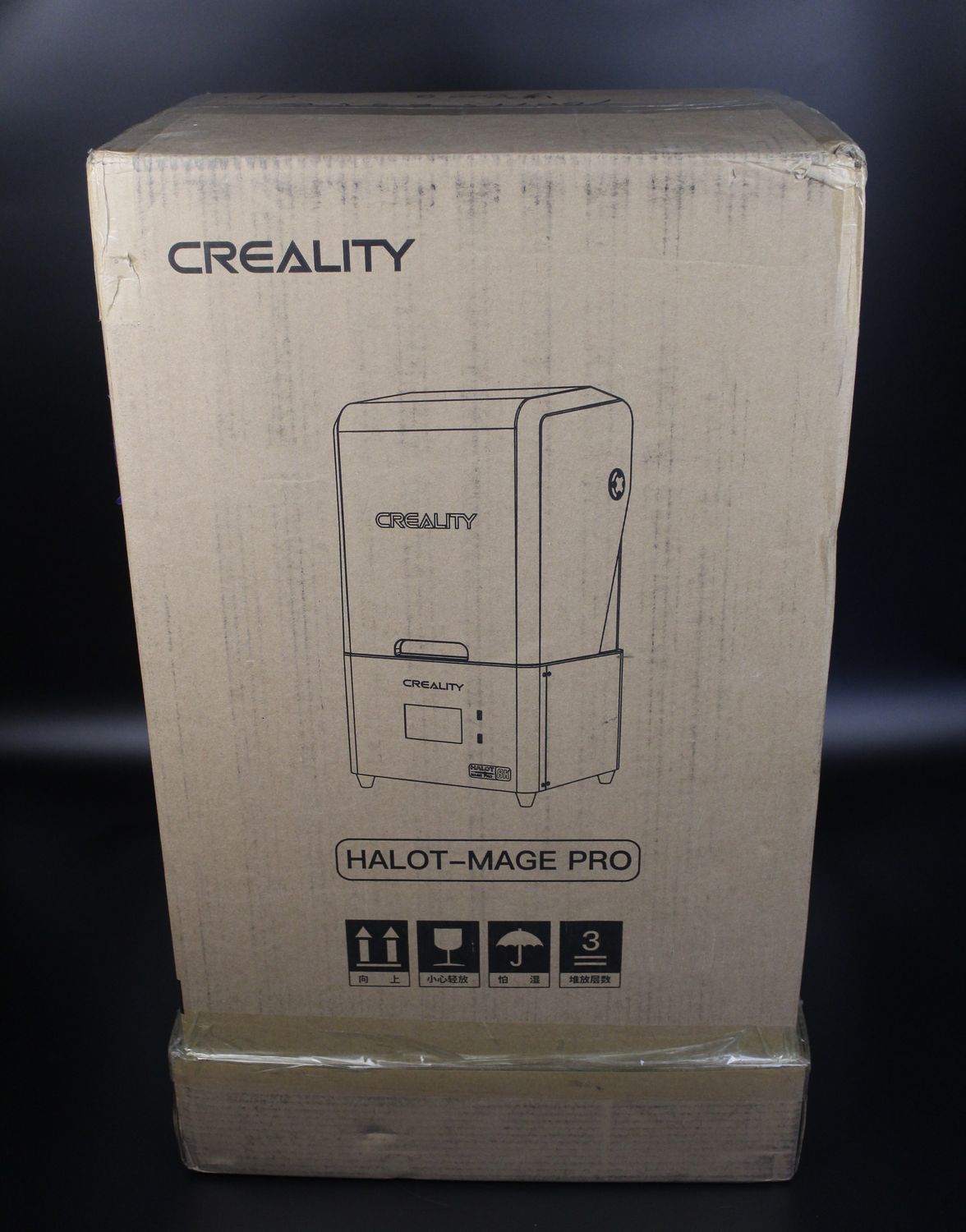
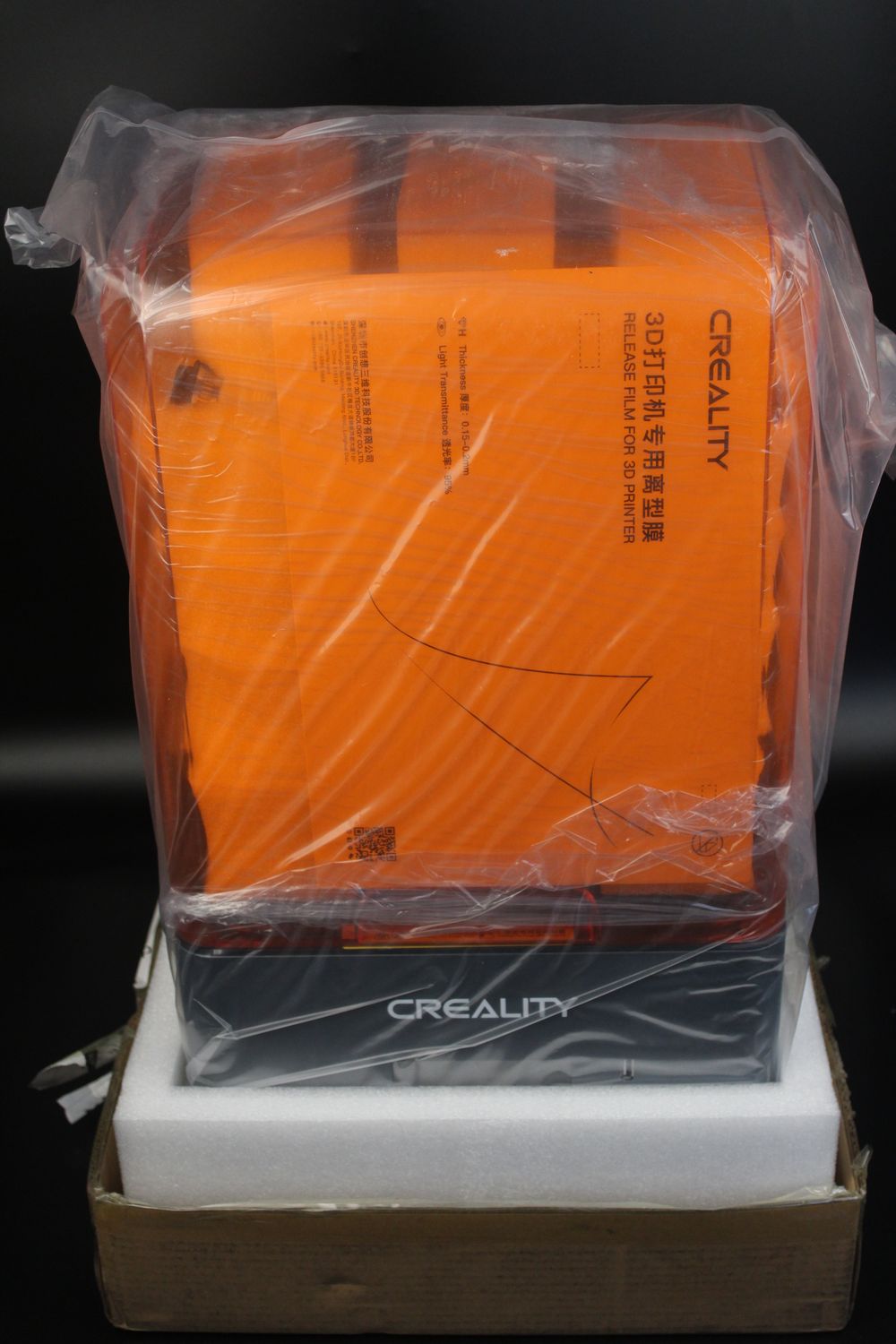
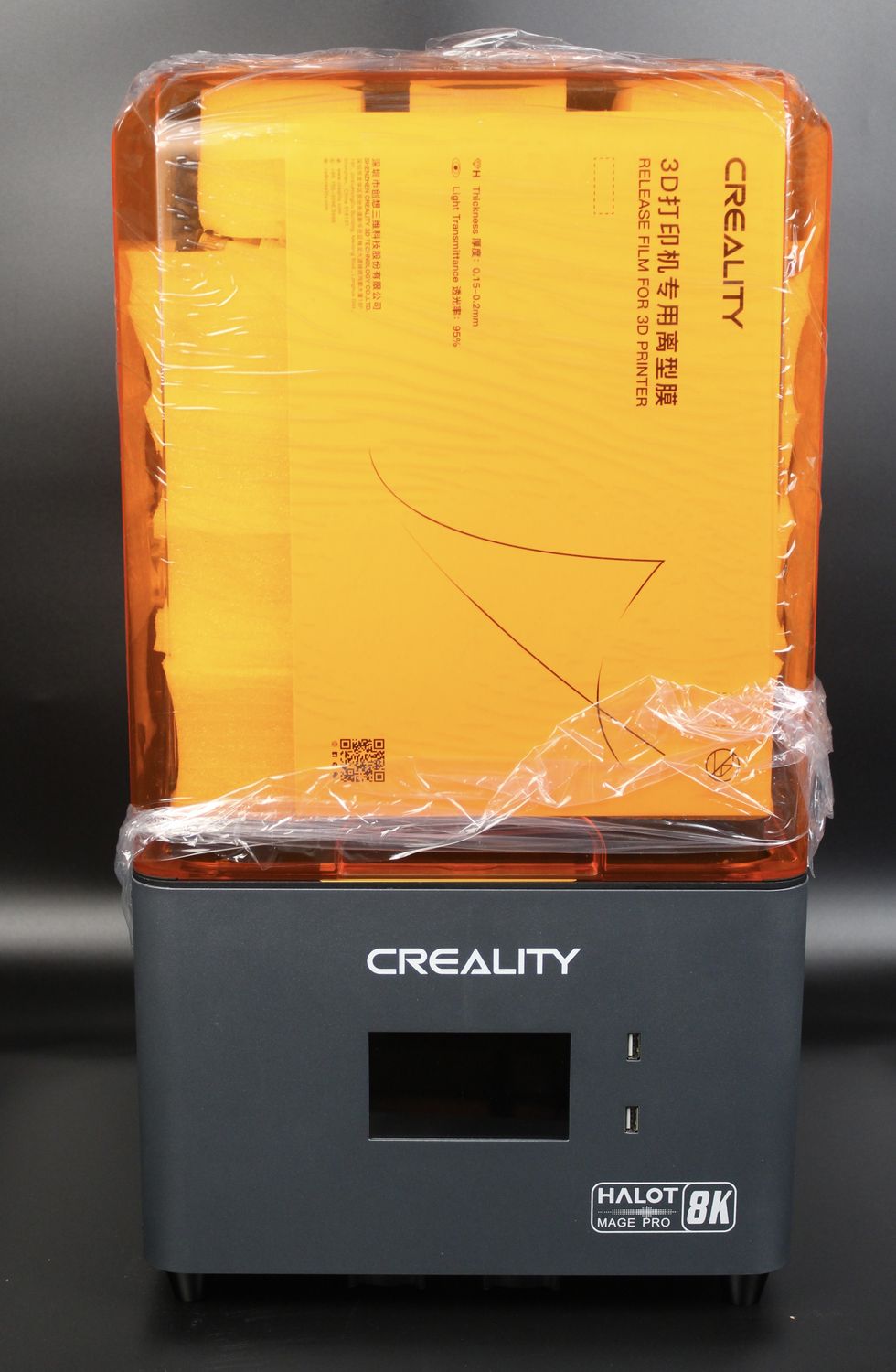
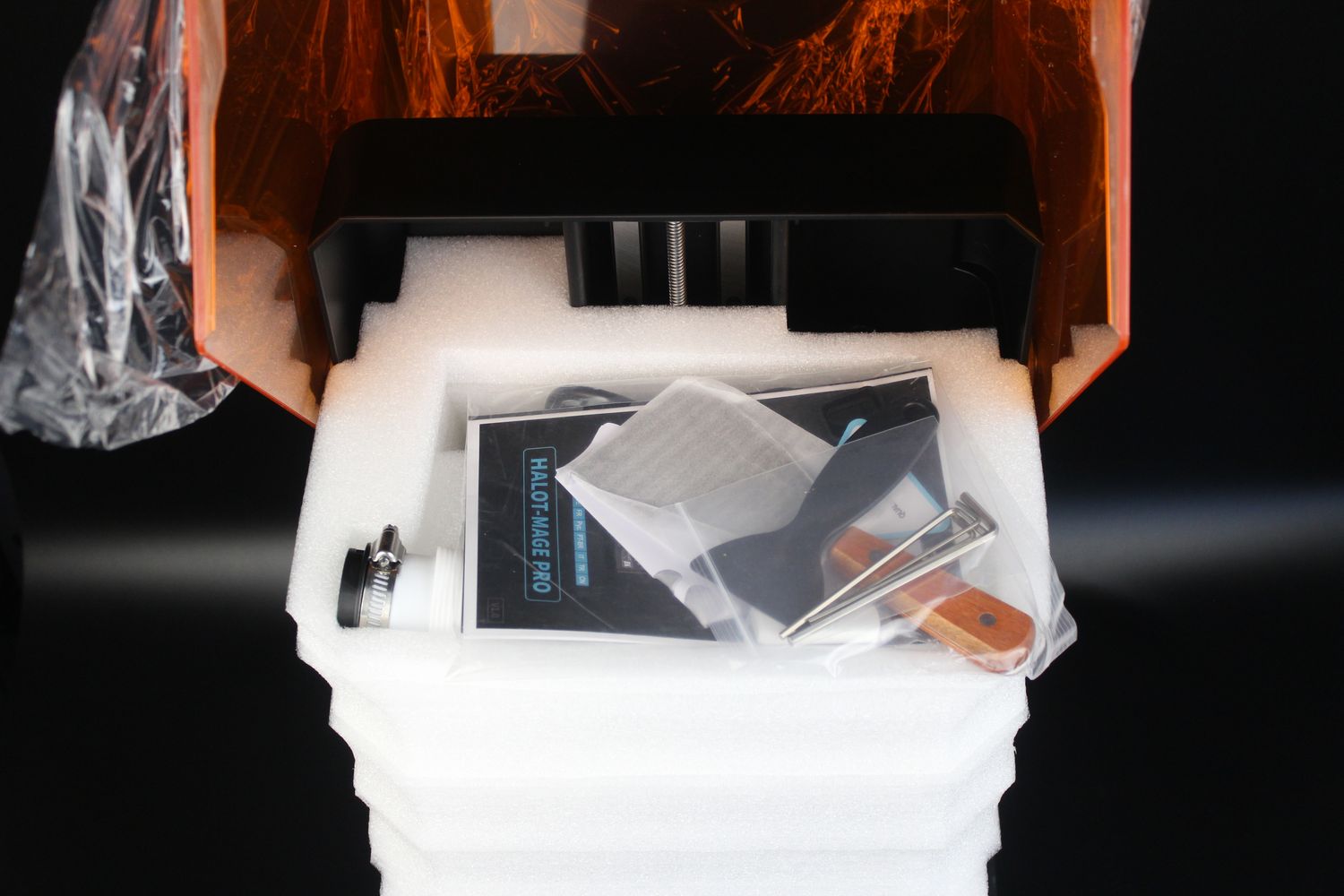
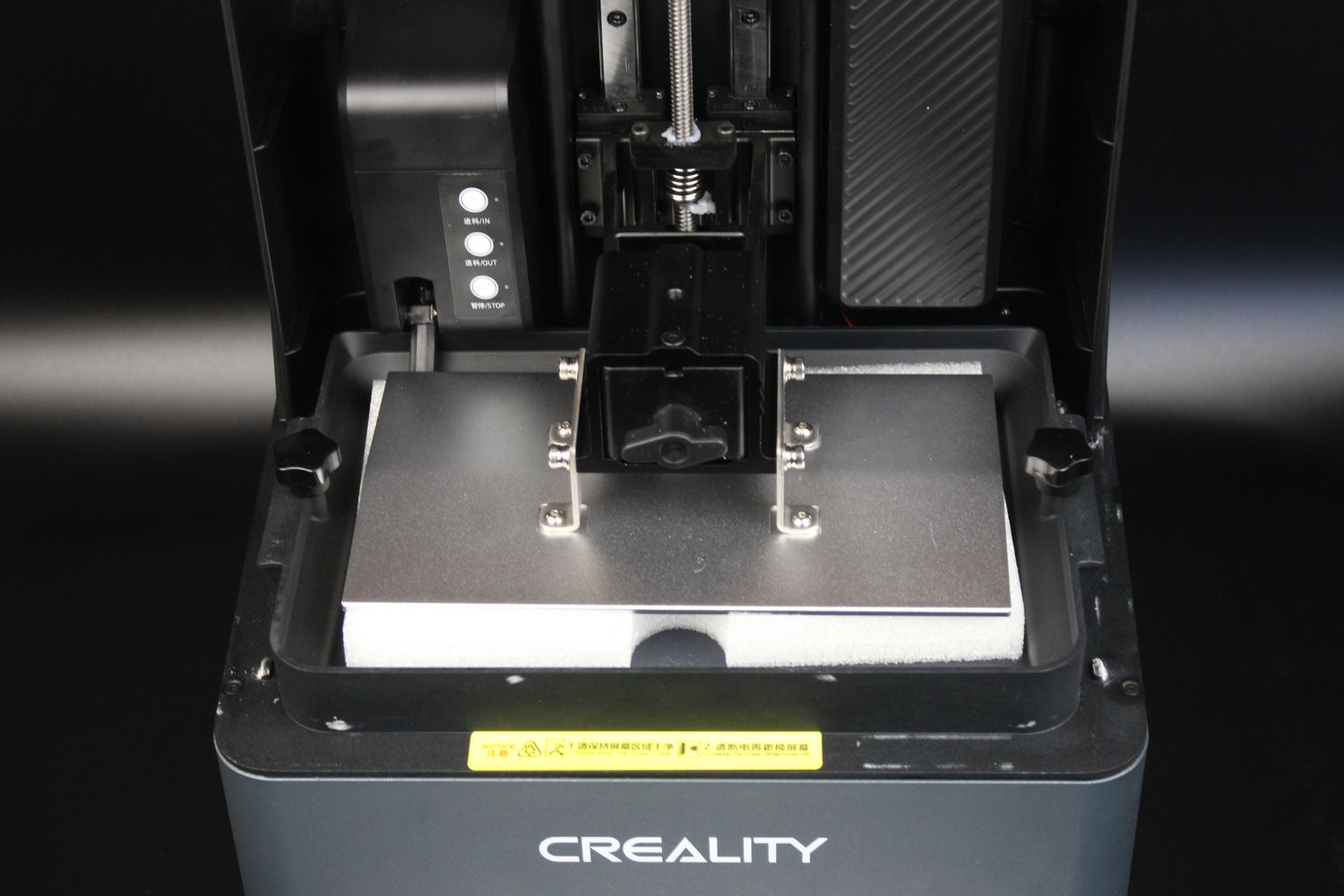
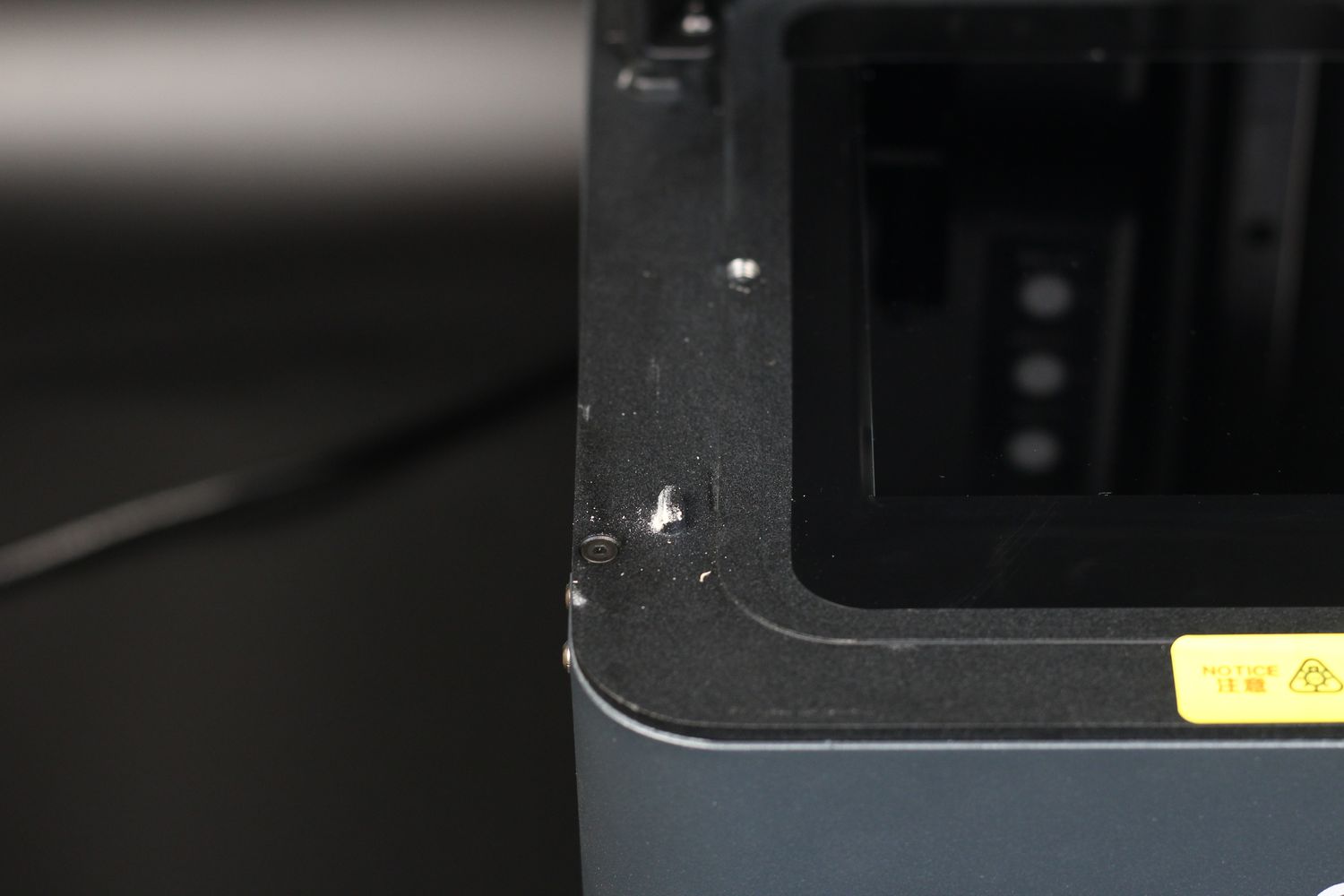
Creality Halot Mage Pro Design
After taking the printer out of the box, and setting it up, this is how it looks. It kind of resembles the previous Creality Halot-Sky but with a more rounded design and a different screen. Honestly, I liked the previous design better, but this one is not that different so it’s fine.
In the back, you also get a round orifice which is used in conjunction with the extension hose if you want to expel the resin smell outside the chamber, and next to it, there’s also a rubber hose which is used with the resin pump for loading and unloading resin in the printer.
The “MageArch” cover is interesting, but that’s not something new. I like it though because it’s always a hassle to remove the one-piece covers from resin printers as you always need a lot of extra vertical space which limits the locations where the printer can be placed.
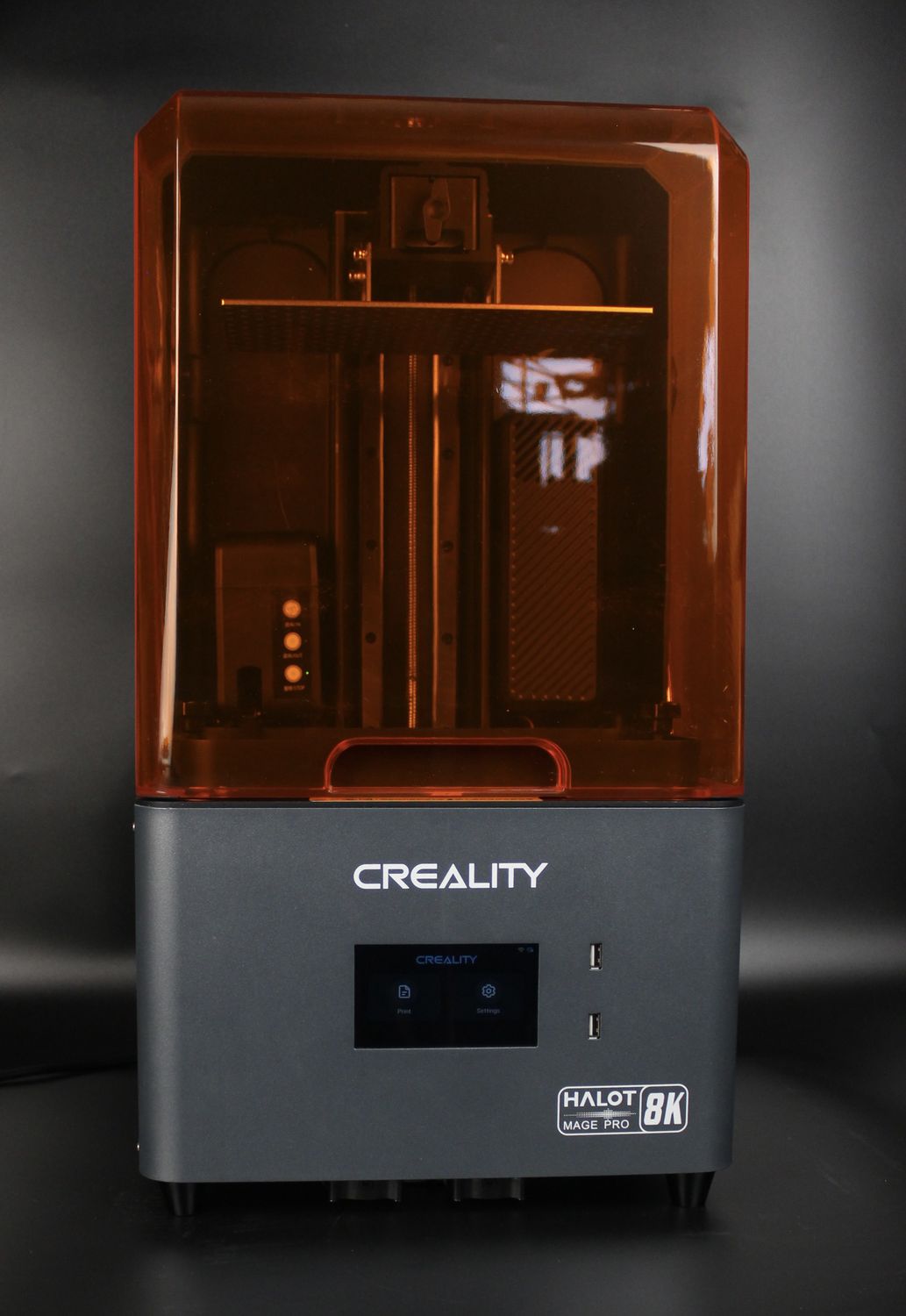
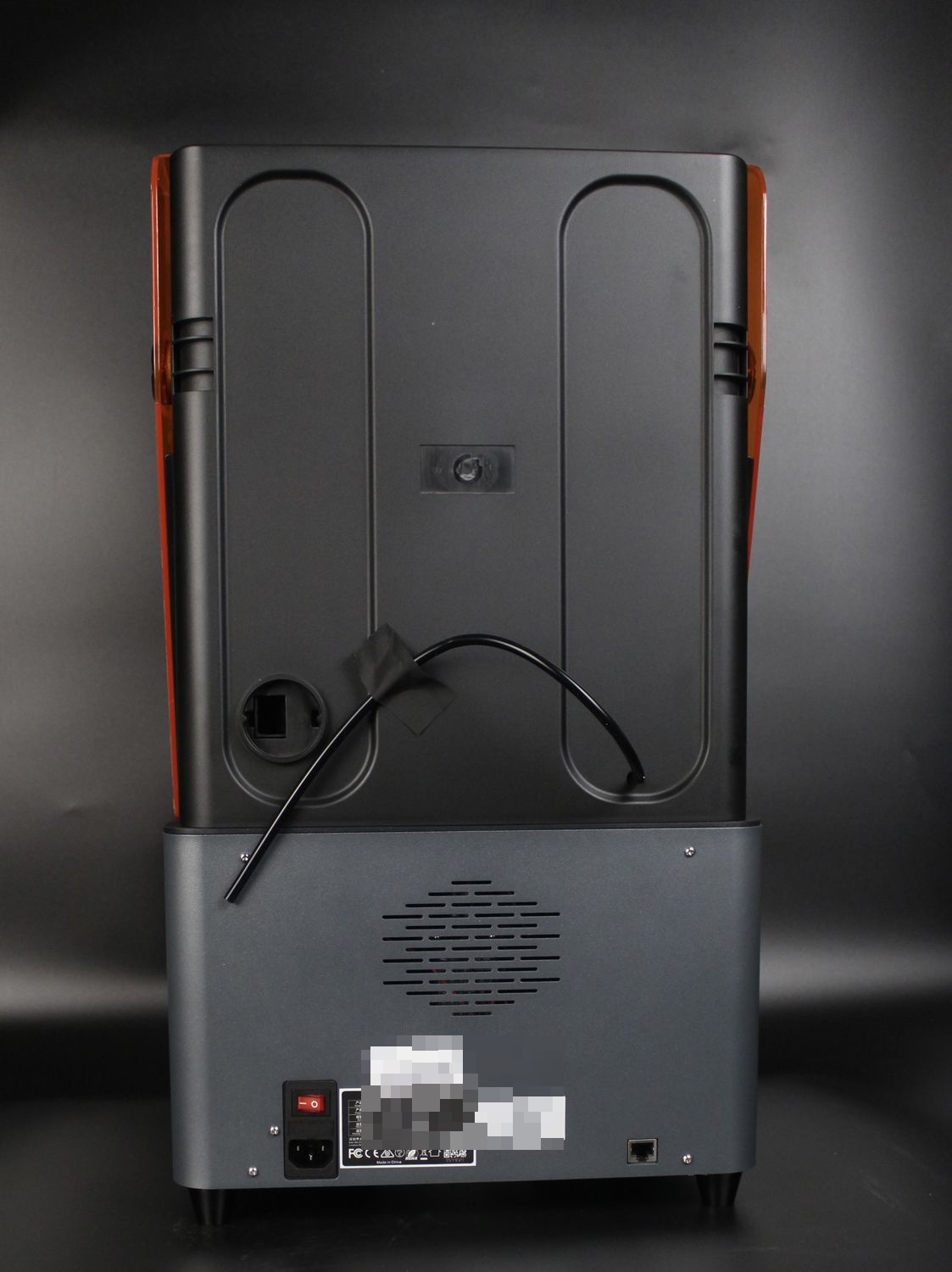
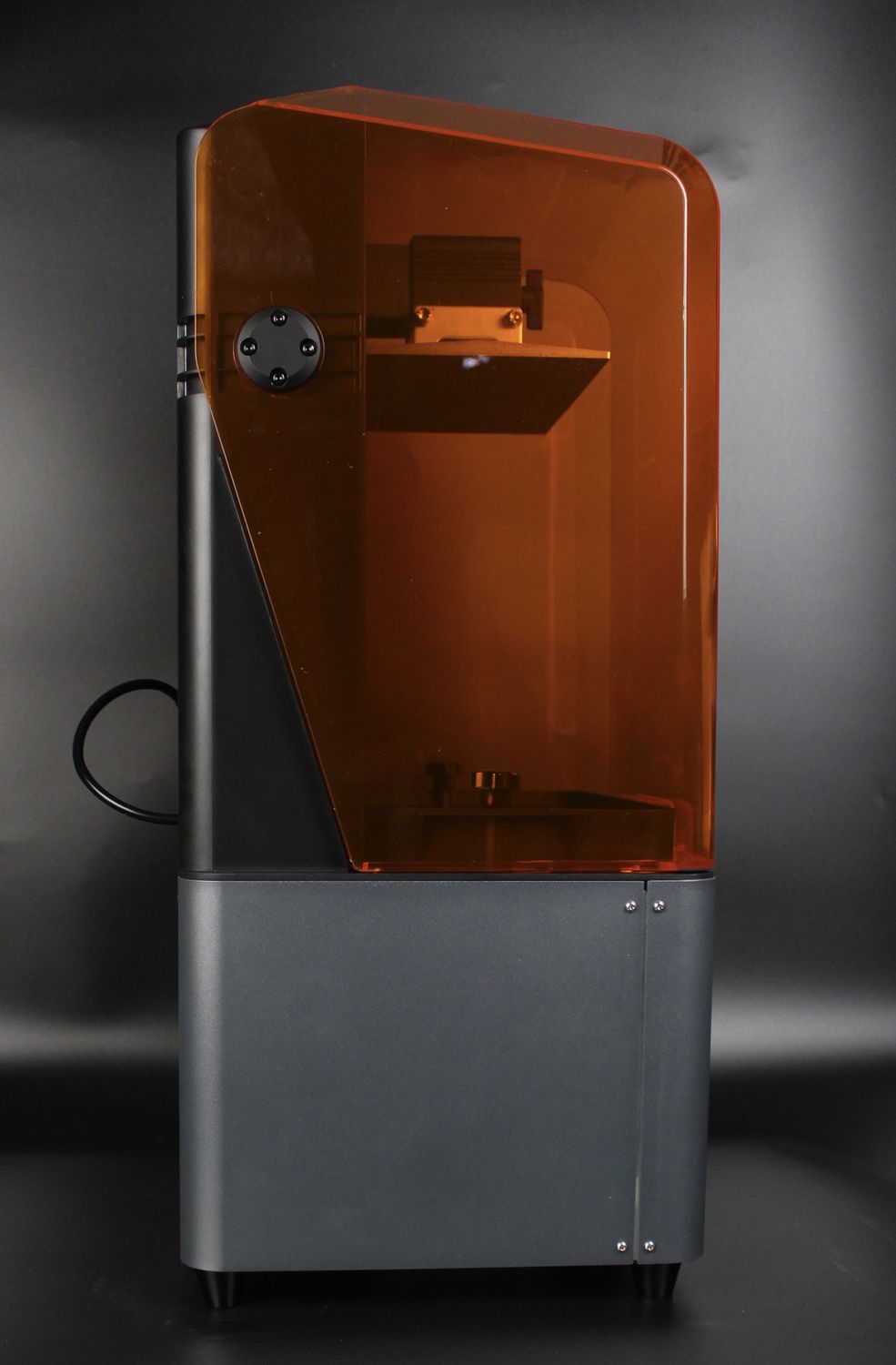

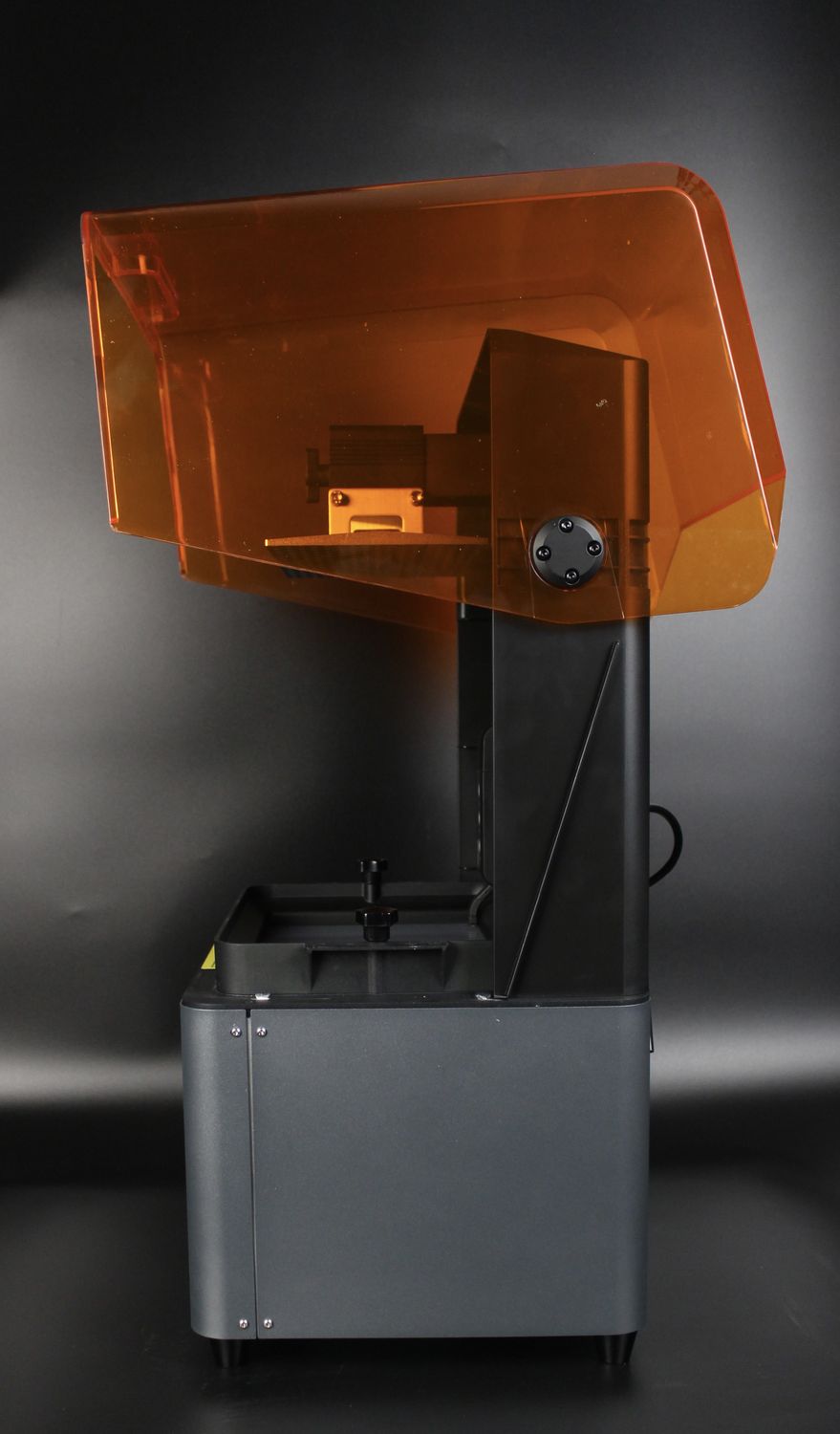
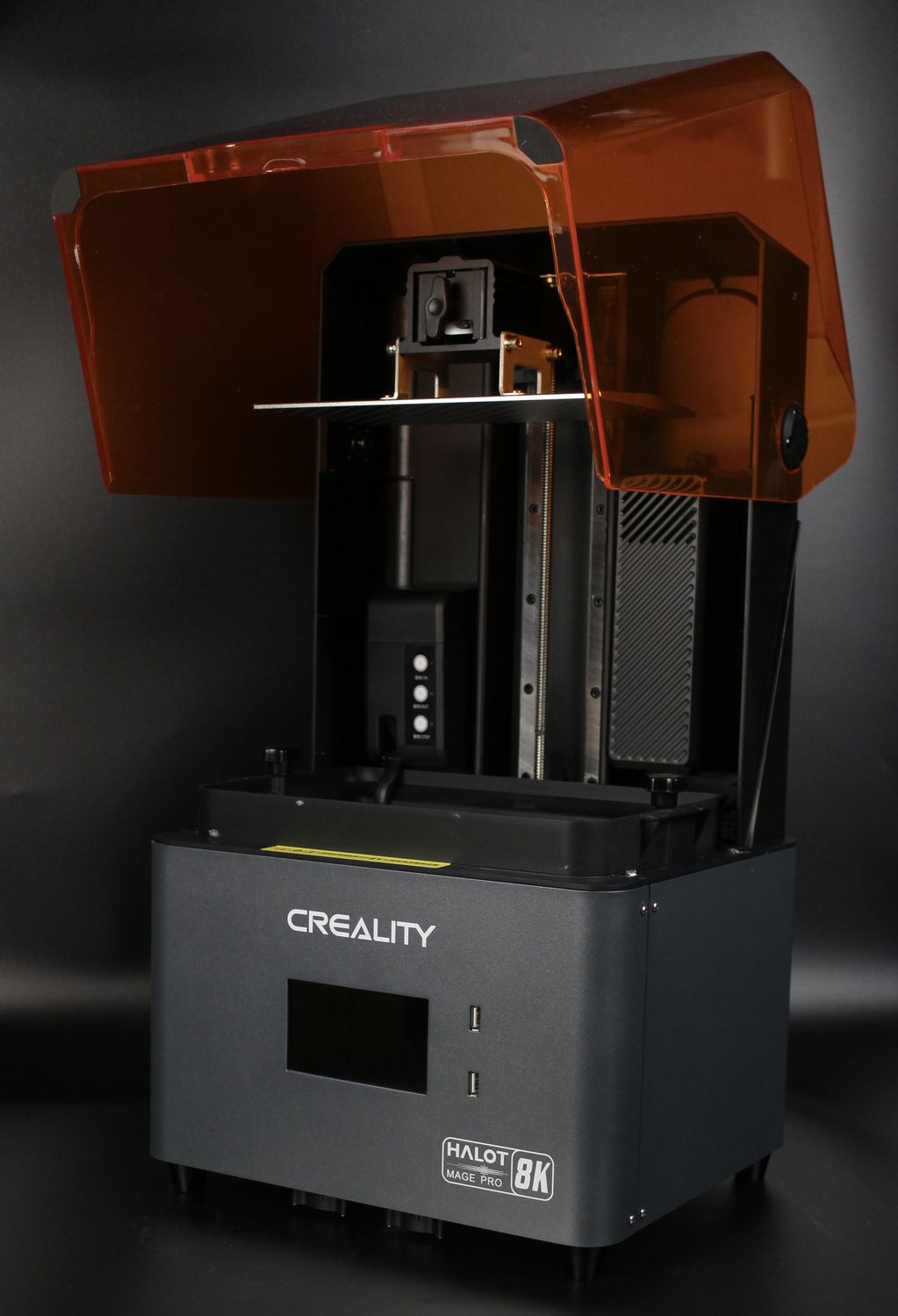
In the front, you get the touchscreen and a pair of USB connectors which are easily accessible for when you want to use the printer. In case you’re wondering why there are 2 USB ports – One is for transferring files to the printer, and the second one should be used for a camera to do either timelapse videos or remote monitoring. But we’ll talk about that more later.
Creality Halot Mage Pro Specs
| Printing Technology | LCD MSLA |
| Build Volume | 228x128x230mm (6712cm³) |
| Product Dimensions | 333x270x608mm |
| Package Dimensions | 420x350x675mm |
| Net Weight | 13kg |
| Gross Weight | 15.8kg |
| Printing Speed | ≤170mm/h |
| Layer Height | 0.05-0.15mm |
| LCD Screen | 10.3“ monochrome screen |
| LCD Resolution | 8K (7680×4320) |
| XY Resolution | 29.7μm |
| Light Source | Integral Light Source 3.0 |
| Light Uniformity (%) | >90% |
| Light Intensity | 8000±10%μW/cm² |
| Release Film | High-speed film |
| File Transfer | USB drive, RJ45 cable, WiFi, Creality Cloud |
| Smart Resin Pump | Yes |
| Air Purifier | Yes |
| Input Power | 150W |
| Resin | 405nm resins |
| Slicing Software | HALOT BOX, CHITUBOX, Lychee Slicer |
| Computer OS | Windows/Mac |
| File Formats | STL/OBJ |
| Display Screen | 4.3″ color touchscreen |
10.3 Inch 8K LCD Screen
With the Creality Halot-Mage Pro, you get a 10.3 Inch 8K LCD with a resolution of 7680×4320 pixels. The screen is monochrome, as you would expect with all recent resin 3D printers. This will last about 2000 hours of print time and also allows for faster print speeds.
What I don’t really like is the small darker spots seen on the light which can have a slight impact on print quality. Considering the new light source used in this printer, I was expecting it to be better than this, and more uniform. But on the test prints I did, it was not a problem so I guess it works.
I also wanted to see how the light is used inside the printer so I removed the front cover to take a peek inside. I like that it was quite easy to do this with only 4 screws to remove before I managed to get inside.
At first glance, I thought that the screen does not include a screen protector, but after checking with Creality about this, they pointed out that it is present. And I checked underneath the insulating material confirming the presence of the protector. I am happy to see it is included as it can save you from a spill on the screen which can be a costly replacement.
But what I saw is the cooling system used for the LED lights which uses a pair of 4020 radial fans to blow air over a bottom radiator. As you can see, the fans are oriented to pull the hot air from inside the machine and then over the heatsink to cool the LEDs but I am not sure if this is the most efficient way of doing it and it’s also a reason why the printer is louder.

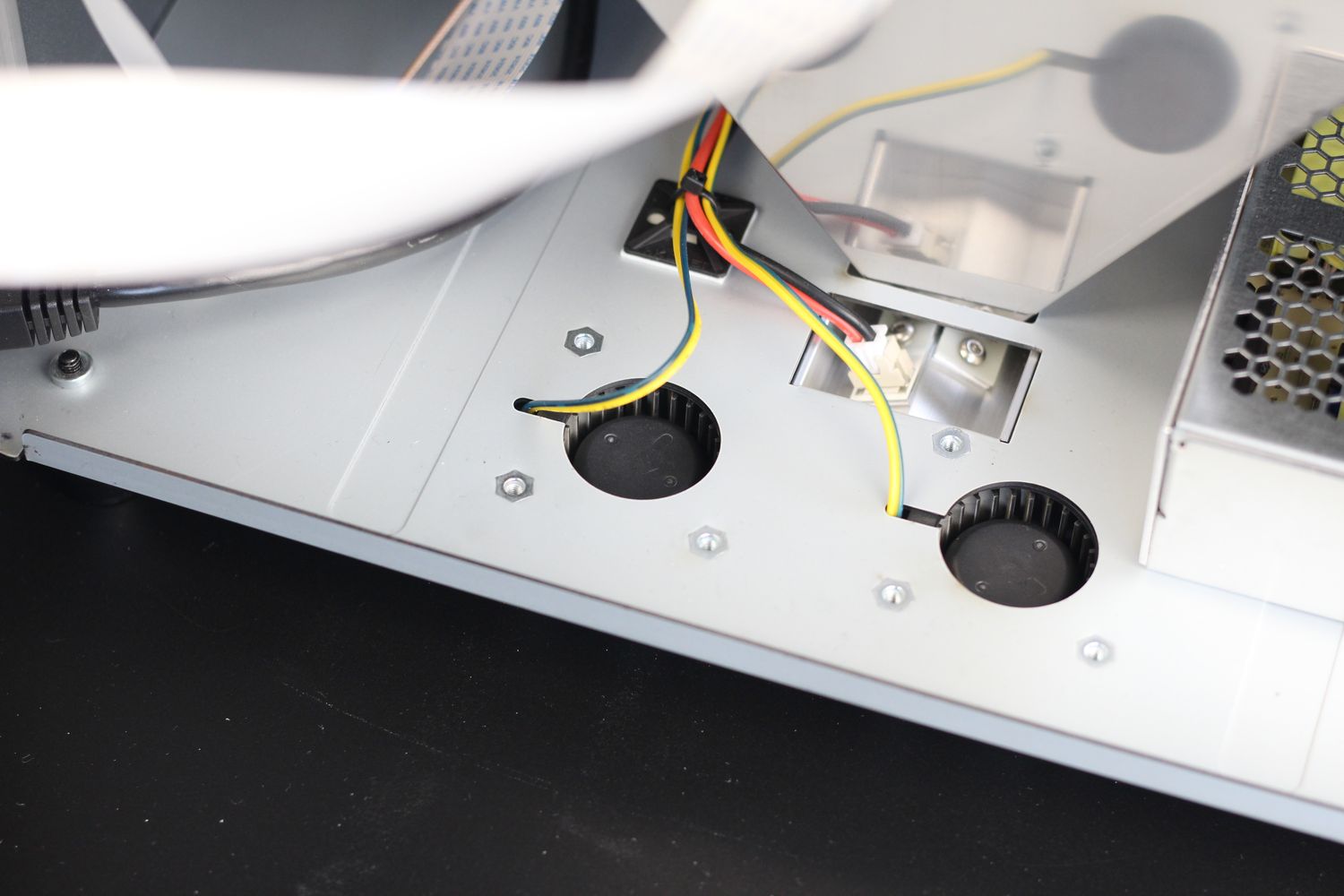
Instead, I would have liked to see a single large fan that blows air over the LED heatsink and maybe a grill in the back to allow the hot air that might build up from the fanless power supply to escape. This would have made the printer more silent and probably better cooled.
Up to 170mm/h Print Speed
One of the biggest features marketed by Creality for the Creality Halot-Mage Pro is the fast print speed which can reach up to 170mm/h. At first glance, this sounds amazing, but there’s a big caveat.
To reach this speed, you will need ideal conditions, which means having Fast Resin which is at the correct temperature (+30C). Besides that, the file would also need to be sliced with a pretty high layer height and fast print movements during layer changes.
For example, in the images below you can see the test print provided by Creality. There are 9 Titanic boards sliced at a 0.2 layer height with the fastest print speed. The entire build plate should take 1h and 30 minutes while the height of the models is at 200mm.


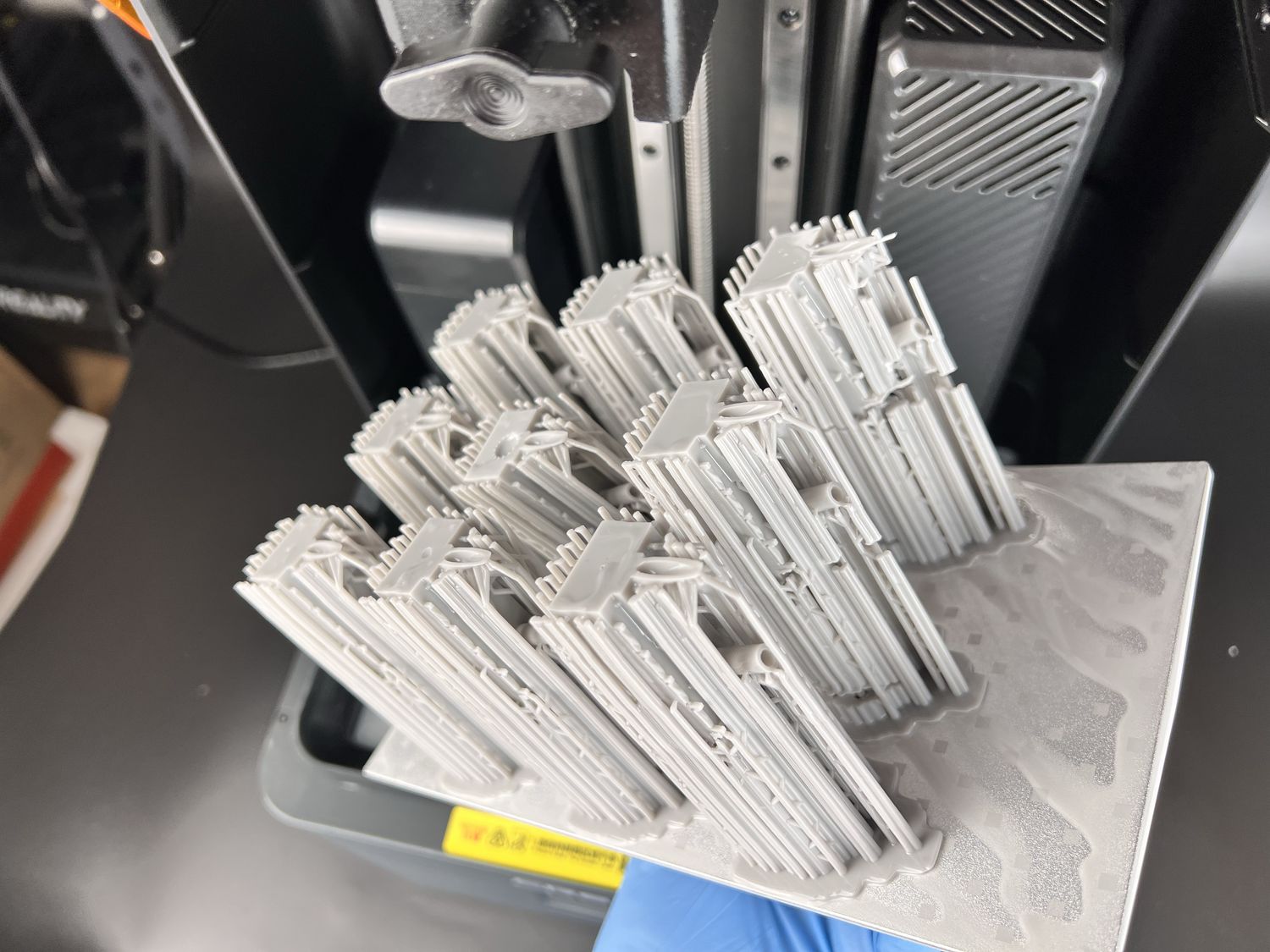
Unfortunately, I did not manage to complete this pre-sliced model successfully, because some of the models kept failing during printing, probably due to too much speed. I wasted more than 1 liter of resin and tried three times, but I did not manage to complete this model successfully. Besides that, the inside of the printer was getting quite warm and at some point I even saw some resin vapors building inside due to the heat.
I do think that with a bit of tuning it might work, but it’s not the thing I would do when printing in resin. With a resin printer, I want the results to be great, so I will be printing at 0.05 mm instead of a 0.2 mm layer height which is more suitable for an FDM printer.
You can even see the Dynax print speed settings in the menu, but to be honest, I really don’t see a use for this at the moment, especially considering that this page is not available during printing.
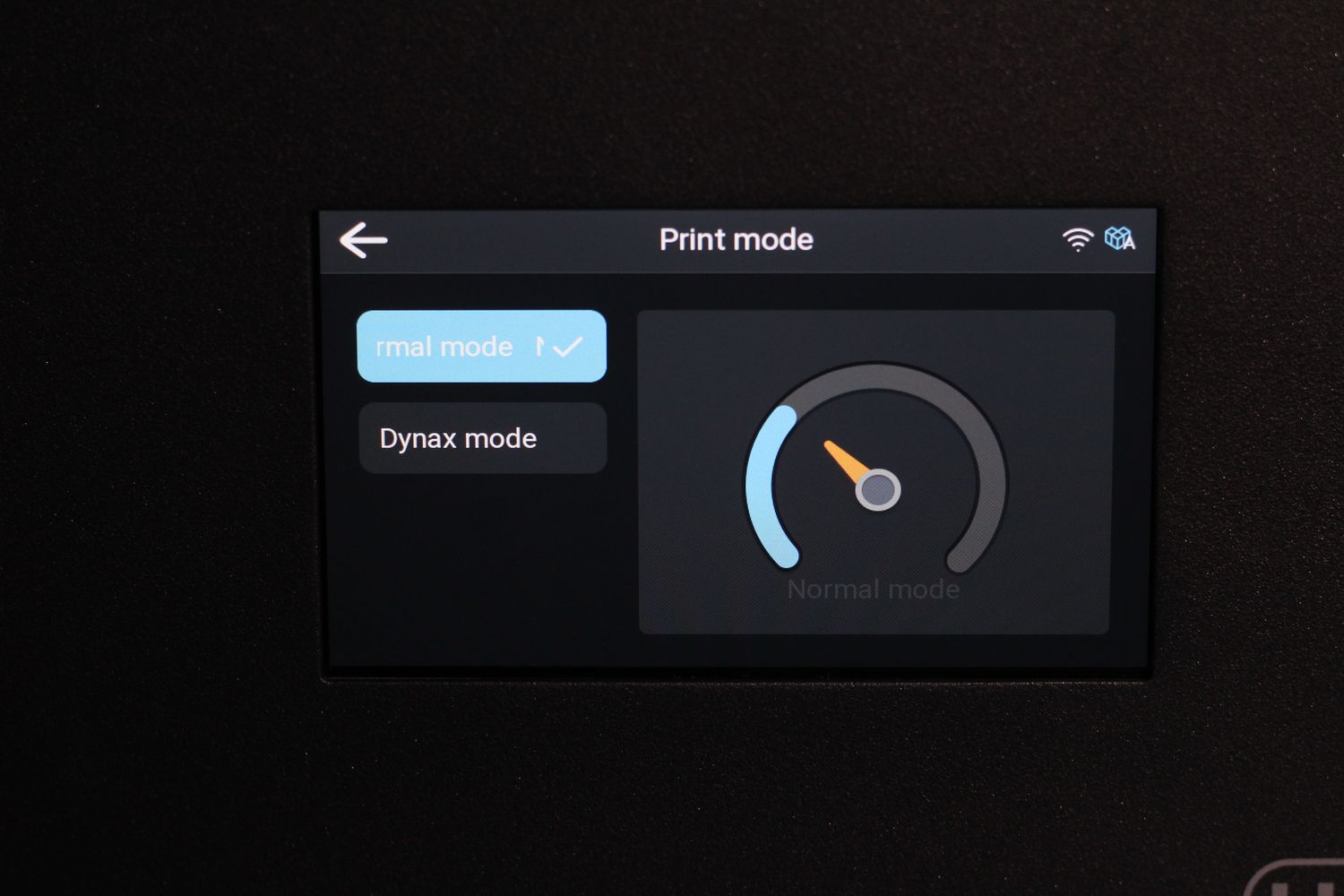
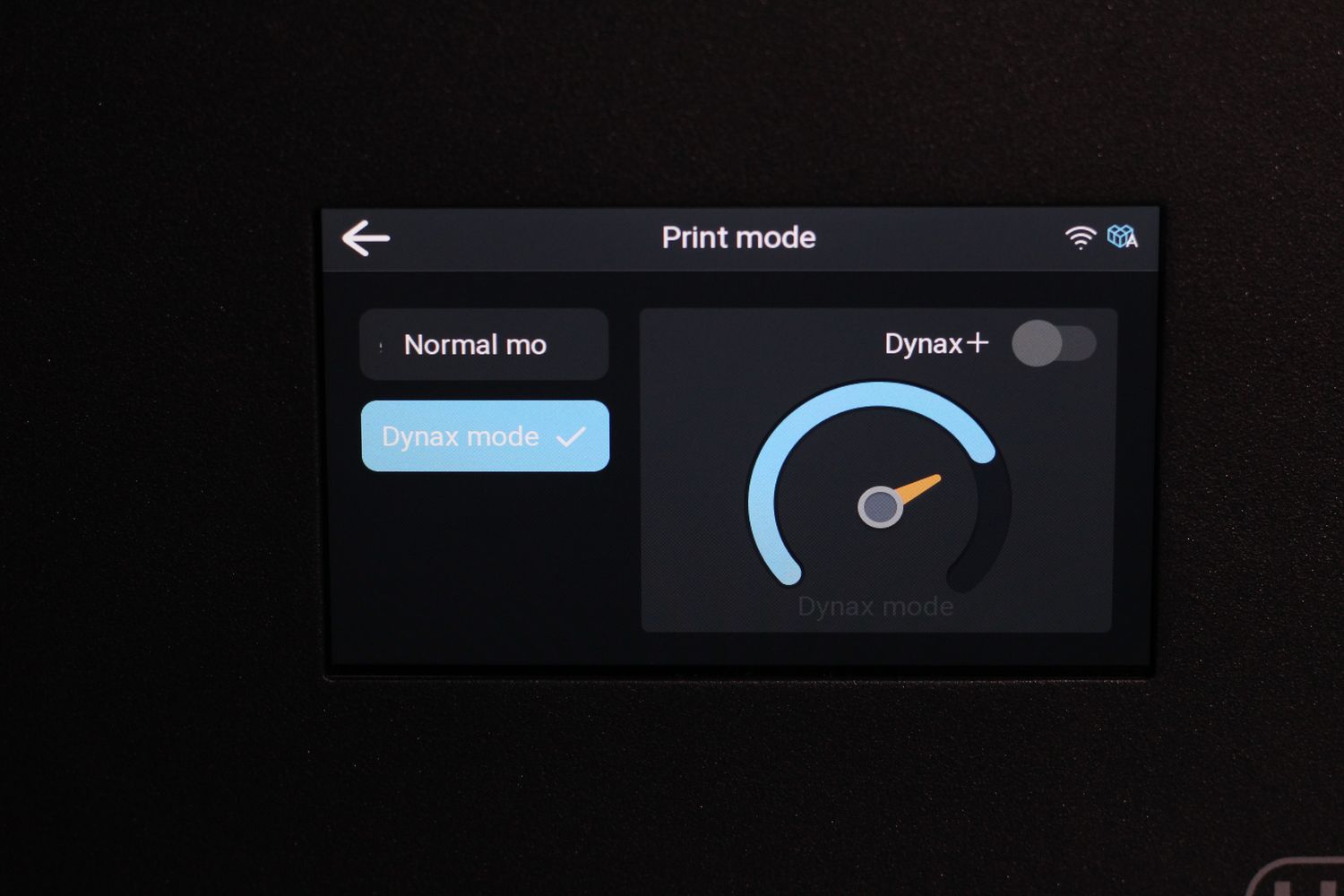
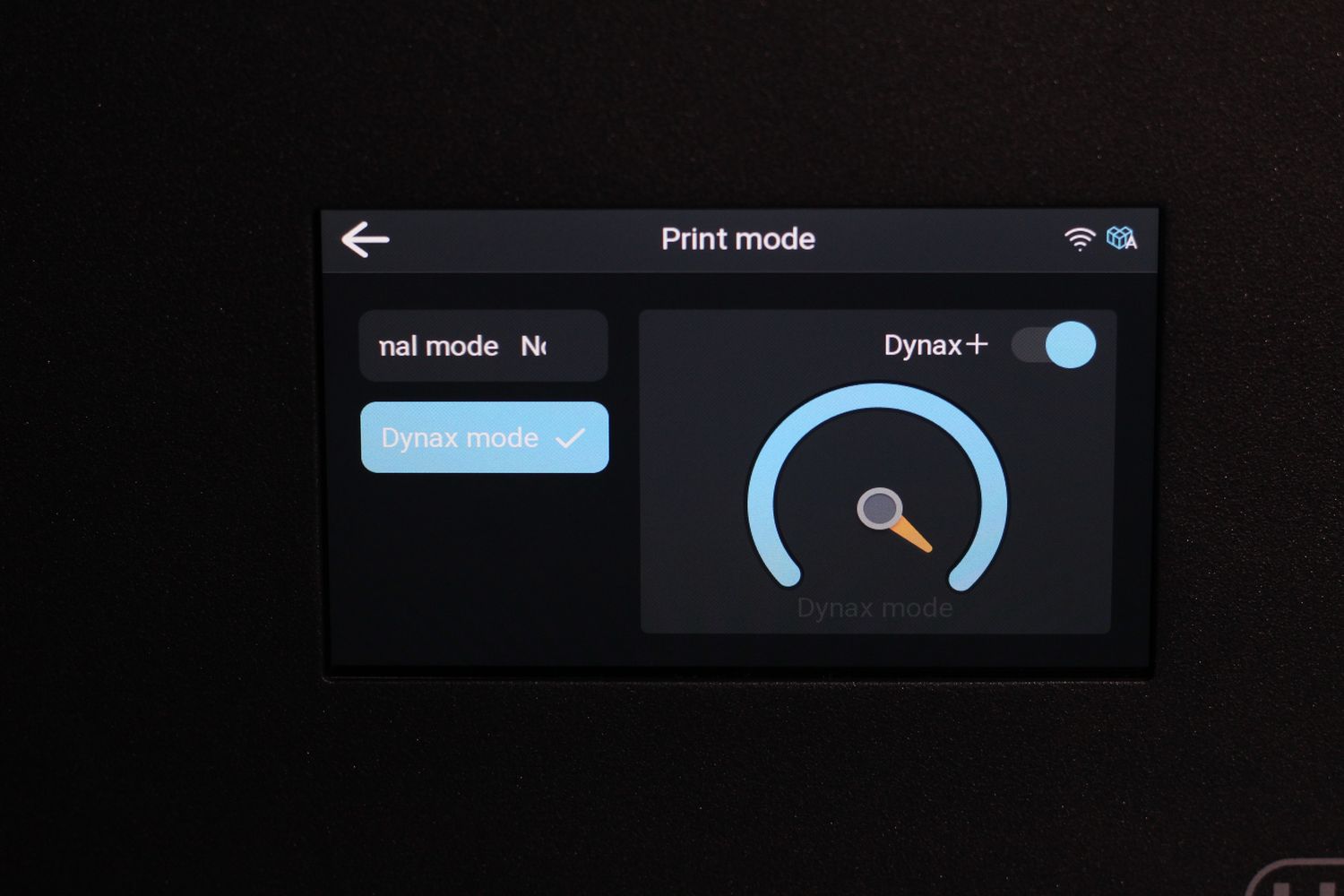
The good news is you can use a 0.05 mm layer height and still keep the relatively high motion speed and get decent results, as you will see in the test prints I had.
Smart Resin Pump
The smart resin pump is one of the interesting features of the Halot-Mage Pro which is quite useful.
You have three buttons on the front of the pump, and you also have controls over it from the on-screen Feeding system menu. Every time you want to load/unload resin in the printer, you will have to use the buttons on it for this operation, or you can use the on-screen options.
Of course, the printer will sense when it’s time to stop feeding resin as it has some capacitance wire inside the nozzle, but it does not know when to stop when you are draining the resin back into the bottle. While it has a bit of “smarts”, I’d say it’s not 100% worthy of that name.
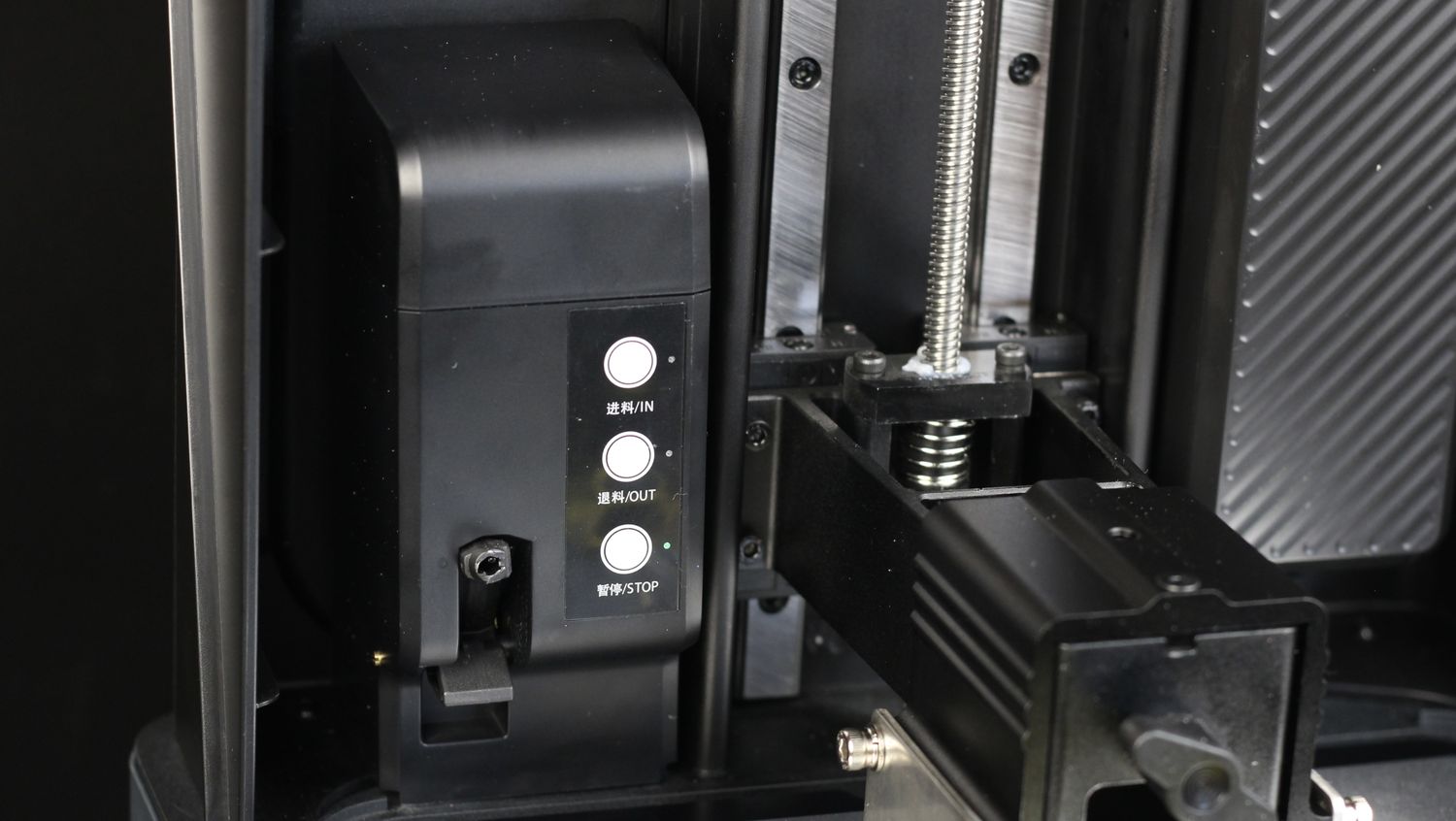

The nozzle I was mentioning is spring-tensioned, meaning that it automatically raises when you pull out the vat, and lower when you install the vat back in. The problem is that when you push the vat back into its place, it’s a bit cumbersome due to the resistance of the spring.
Another issue, which is quite significant, is the nozzle. On my unit, the plastic around the nozzle was not cut correctly which generated damage to the FEP film due to the pressure against it. I patched the FEP film with some tape on both sides, and I was able to print without any issues, but it’s not something you would want to see on a resin printer.

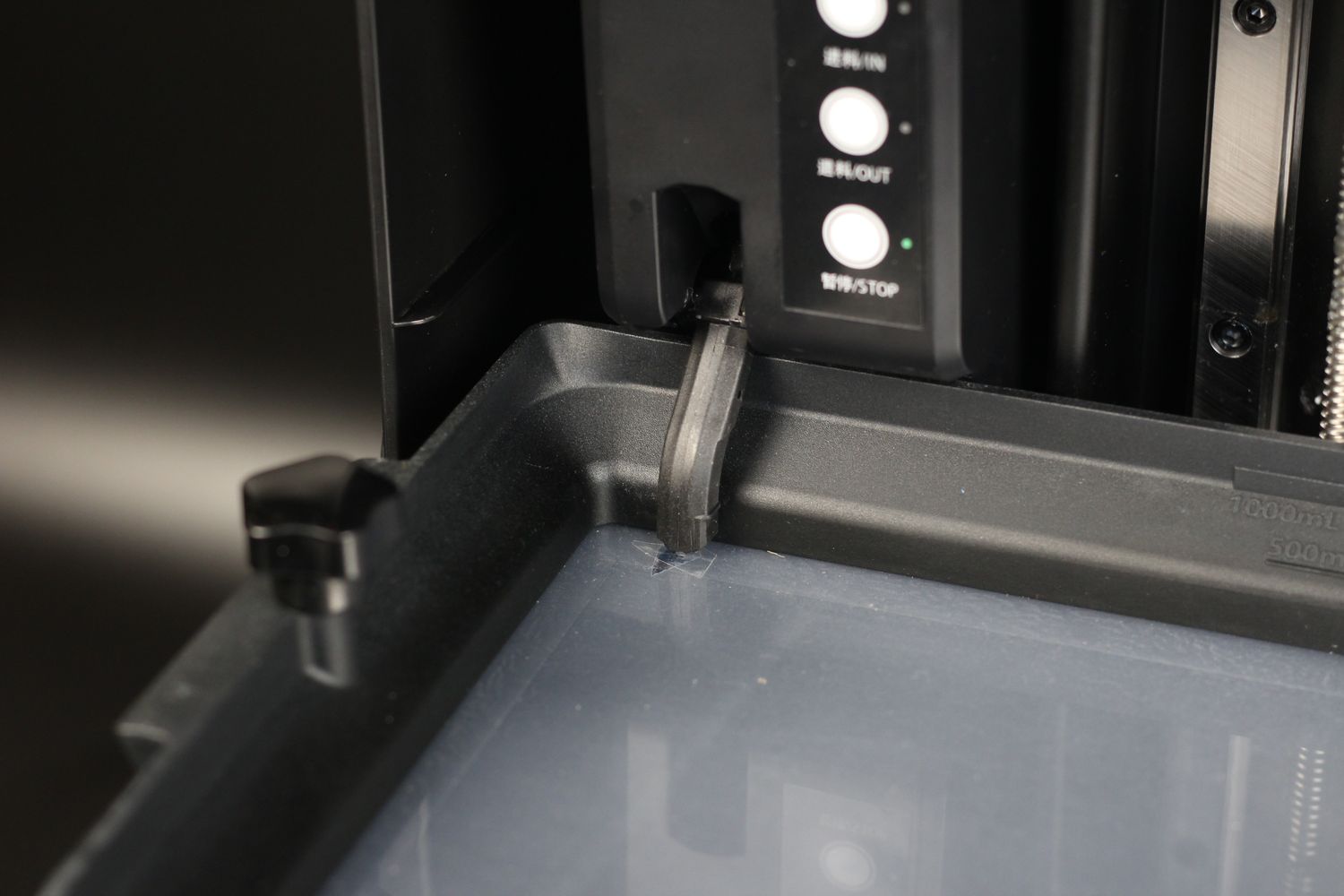
Below, you can see the holes present in the FEP film.
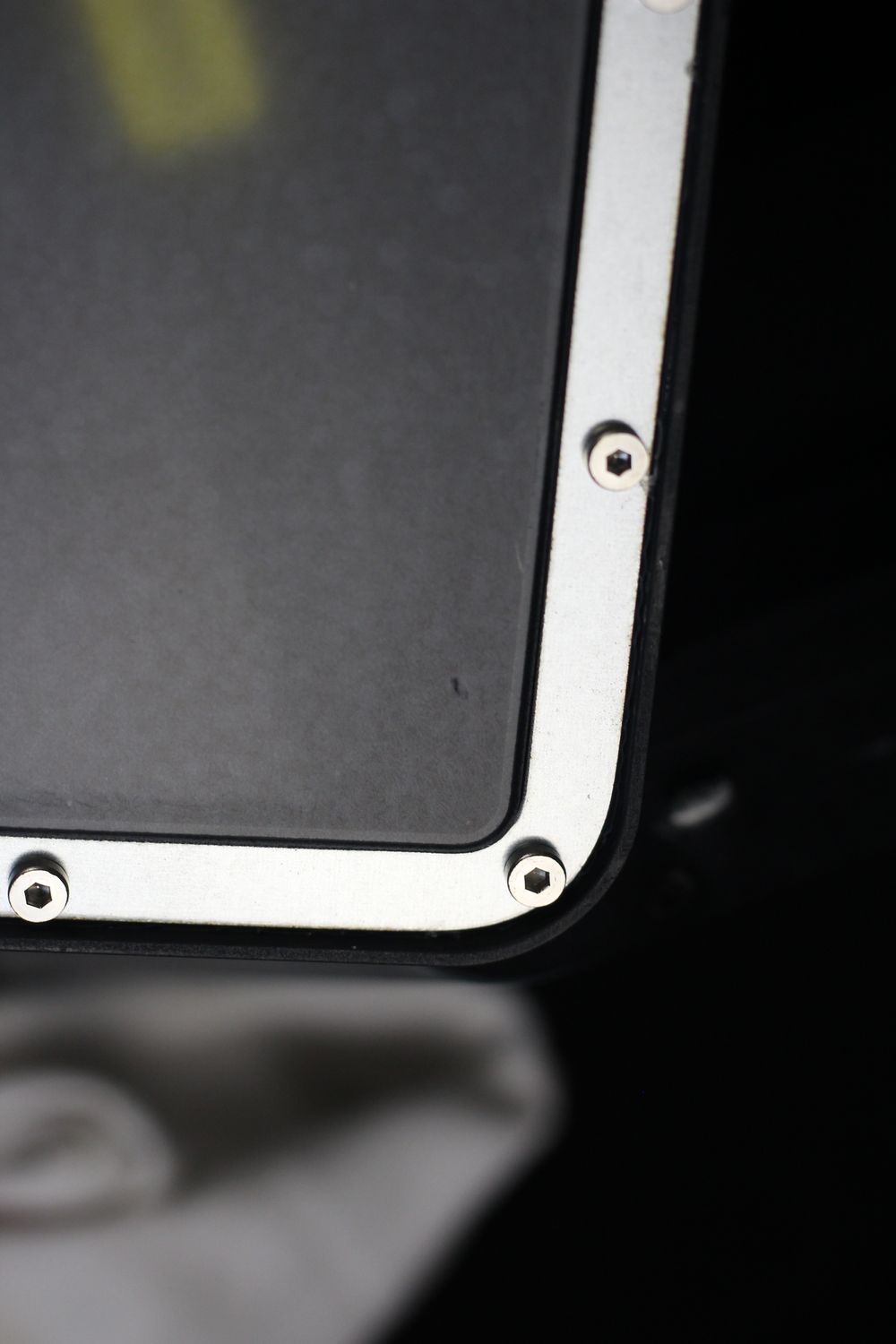

In the video below, you can also check the speed of the resin pump, and the noise it generates. It’s not a quiet unit.
“Smart” Air Filter
Another “smart” feature of the Halot-Mage Pro is the air filter. This filter is quite a big unit located on the back of the machine and it serves as a mechanism to pull the odors from the printer through the carbon pellets inside the filter then outside the machine.
Unfortunately, this feature did not work on my side, and using the filter was even worse than not using it at all. Due to its design, the air doesn’t really seem to get pulled trough the filter, as it can escape between the sides of the filter.
Or, maybe the issue was related to the fact that the carbon filter was quite used up. In the images below, you can see the condition of the carbon filter I received with my review unit and the radial fan which is full of dust. It could have been a printer that was used previously for tests, or the filter looks like this when new, but I highly doubt it.
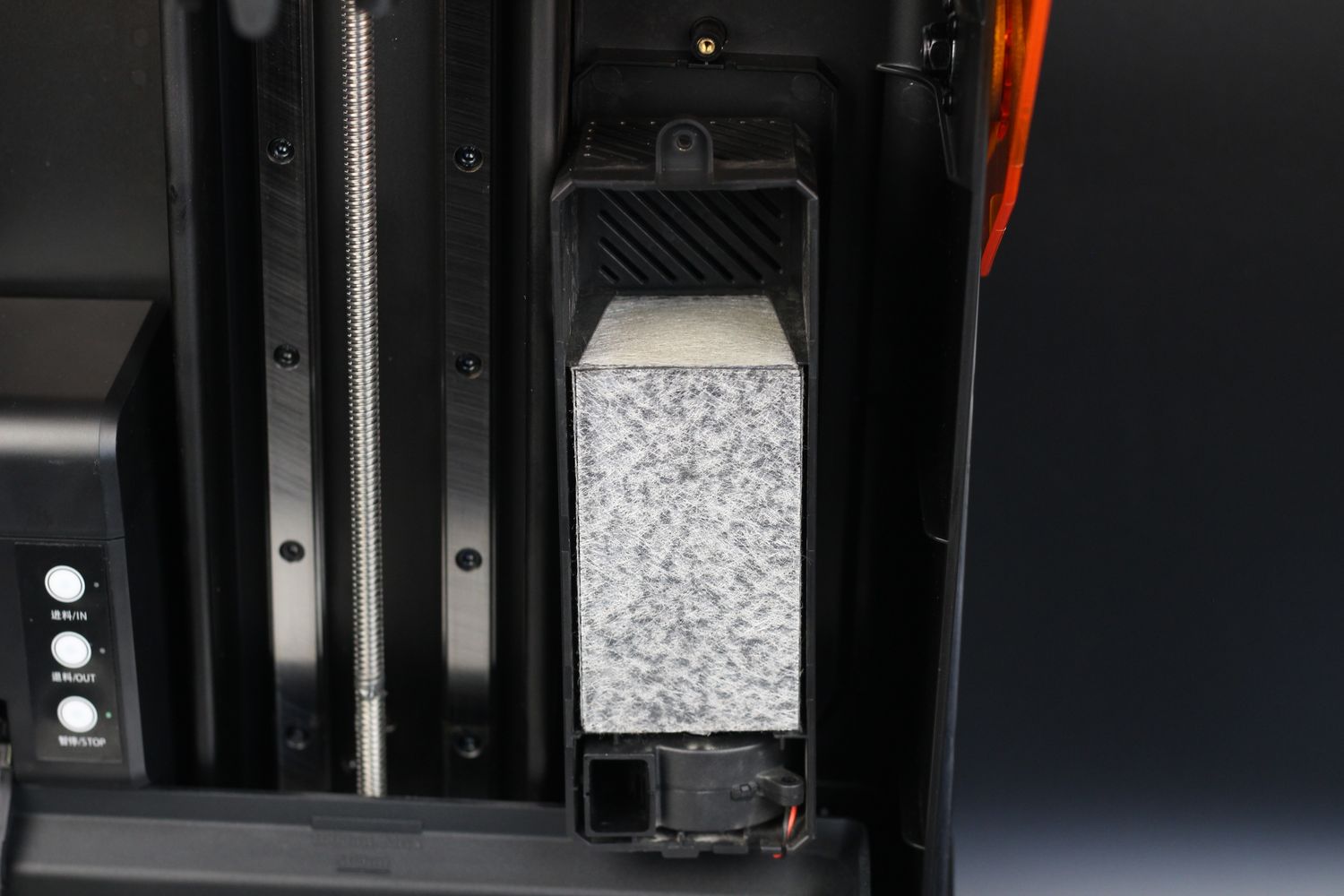
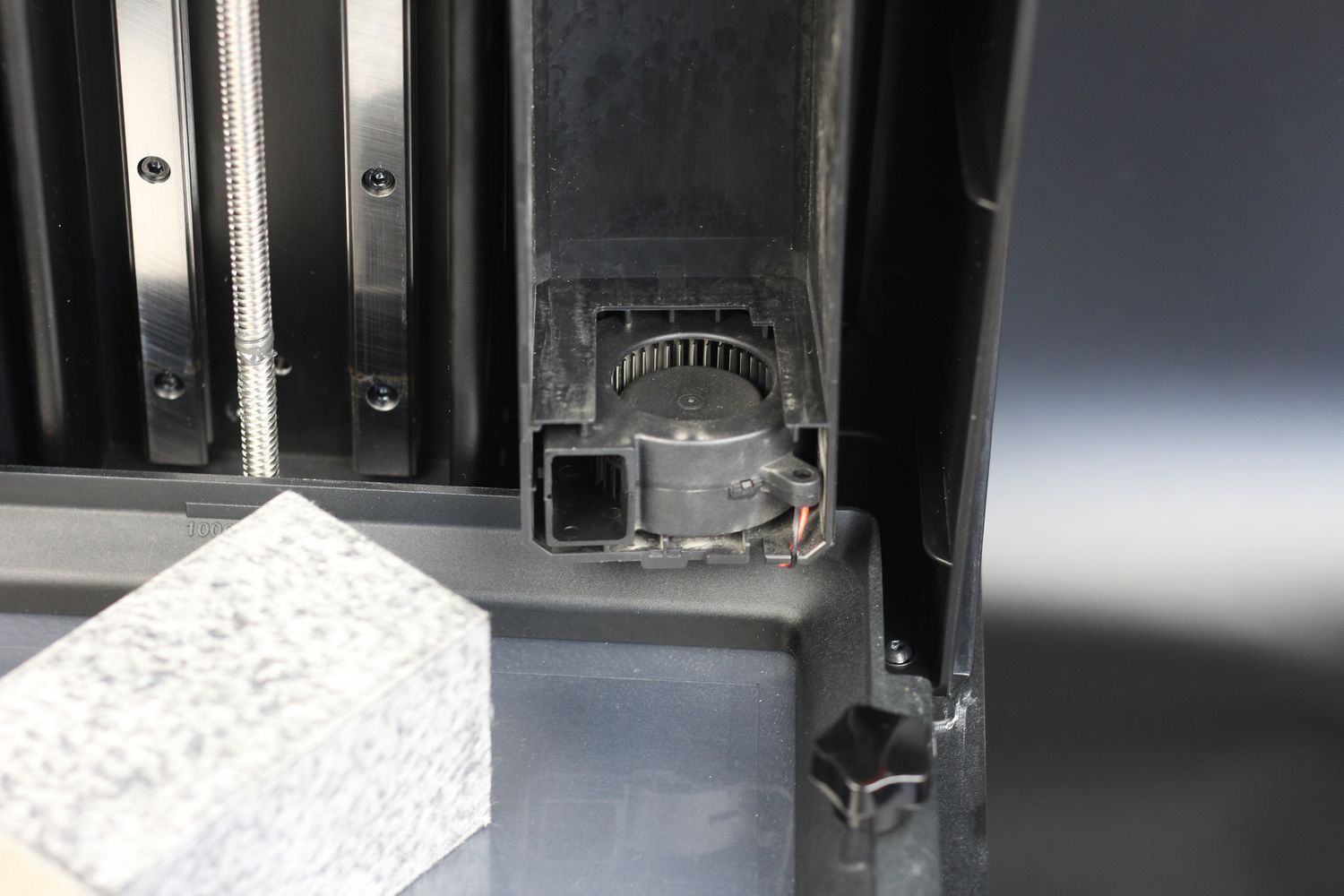
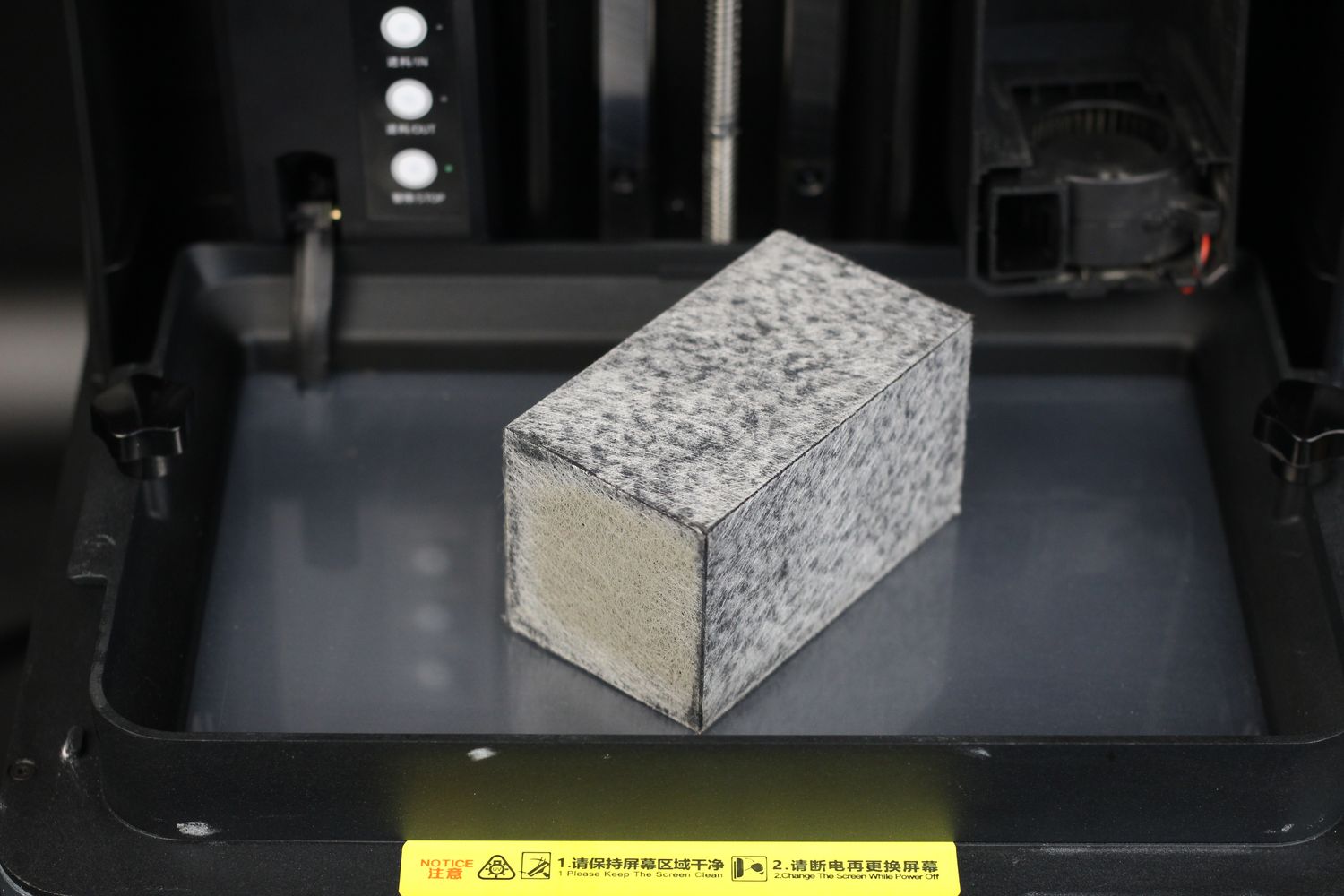
Wi-Fi and Ethernet connectivity
In terms of connectivity, the Creality Halot Mage Pro has both 2.4 Ghz Wi-Fi support and wired connection, in case you need it. This is one of the main benefits of the Pro version compared to the regular Halot Mage.
This connection option can be useful for some people, or companies. If the Wi-Fi network you are using has features like RADIUS authentication or MAC filtering, it will be harder to get connected so a cable connection can be the quick an easy way to get it in the network.
4.3 Inch Touchscreen
The 4.3 Inch display on the Halot Mage Pro is nothing to write home about, but it has good viewing angles and it’s responsive. I also like the plethora of on-screen options to control most of the firmware features, my favorite being the Printer Maintenance section where you can get a notice when maintenance needs to be performed.
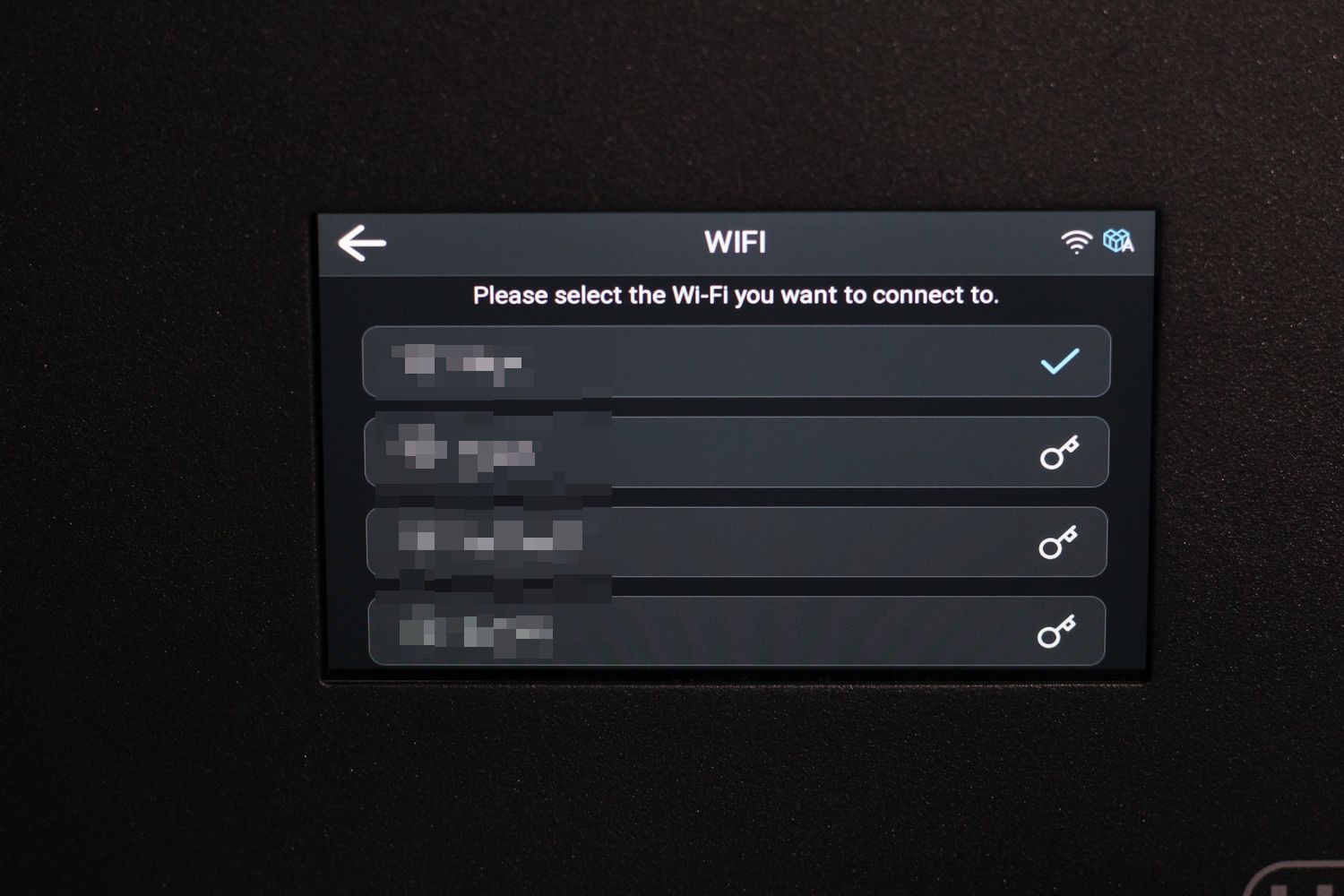
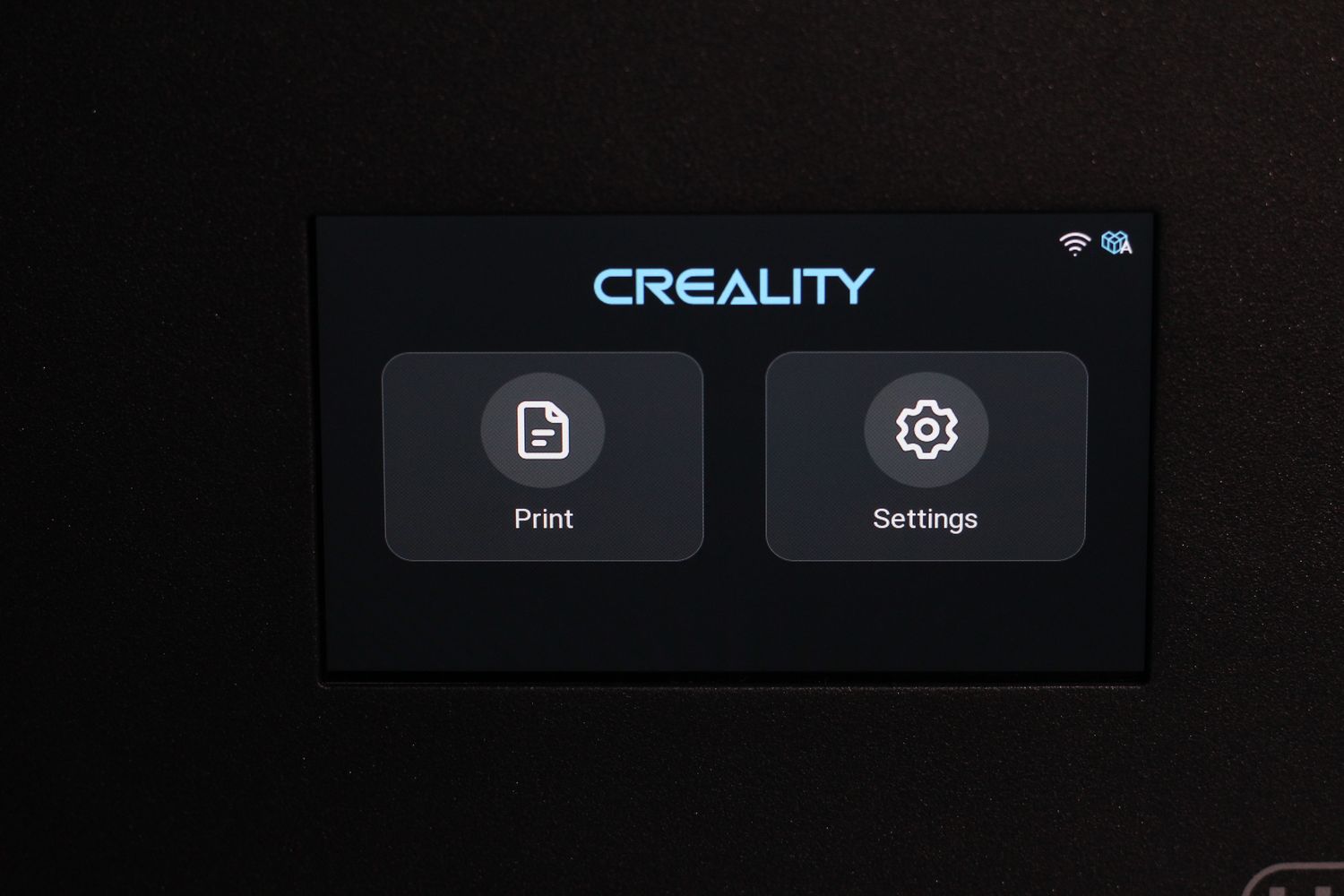
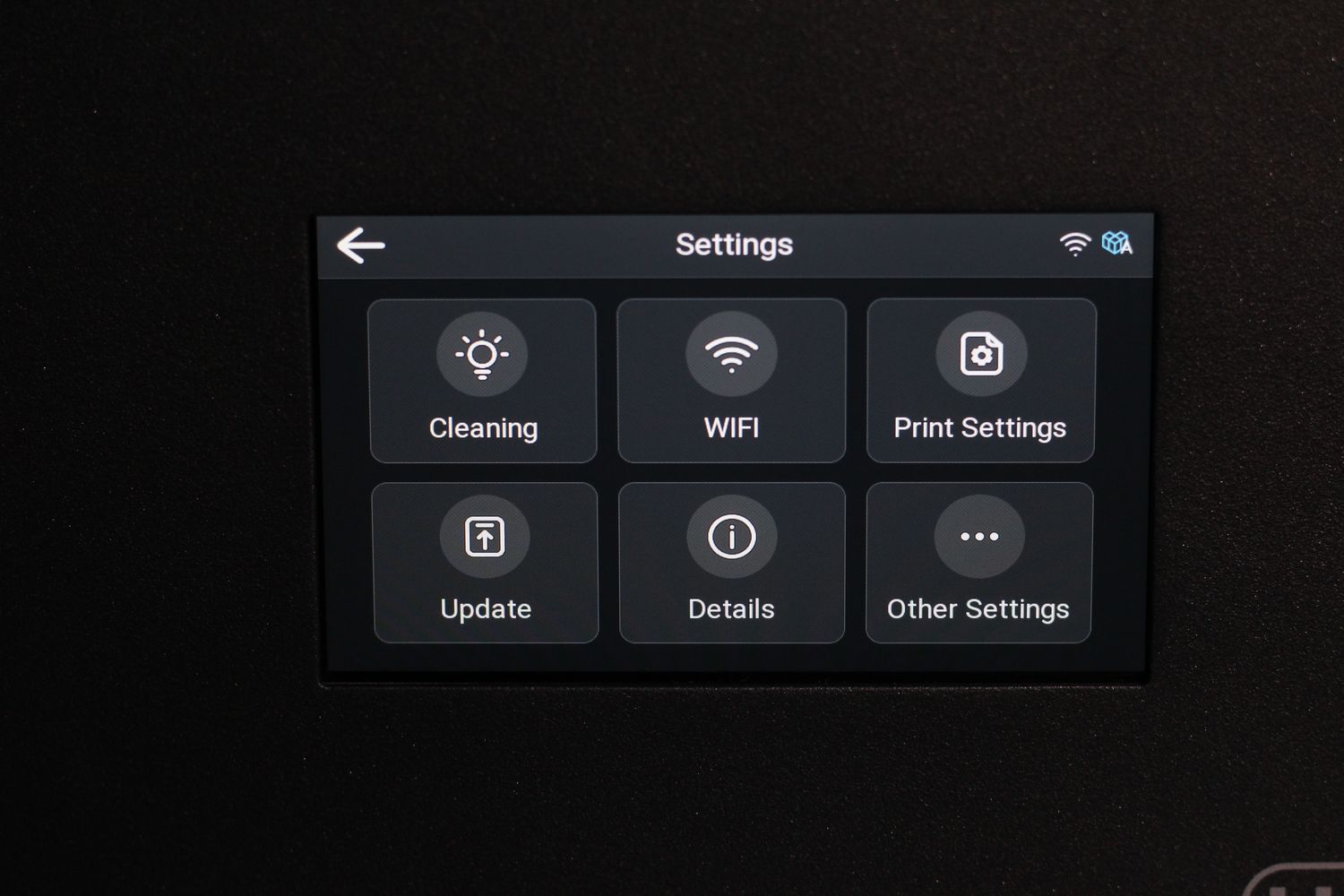


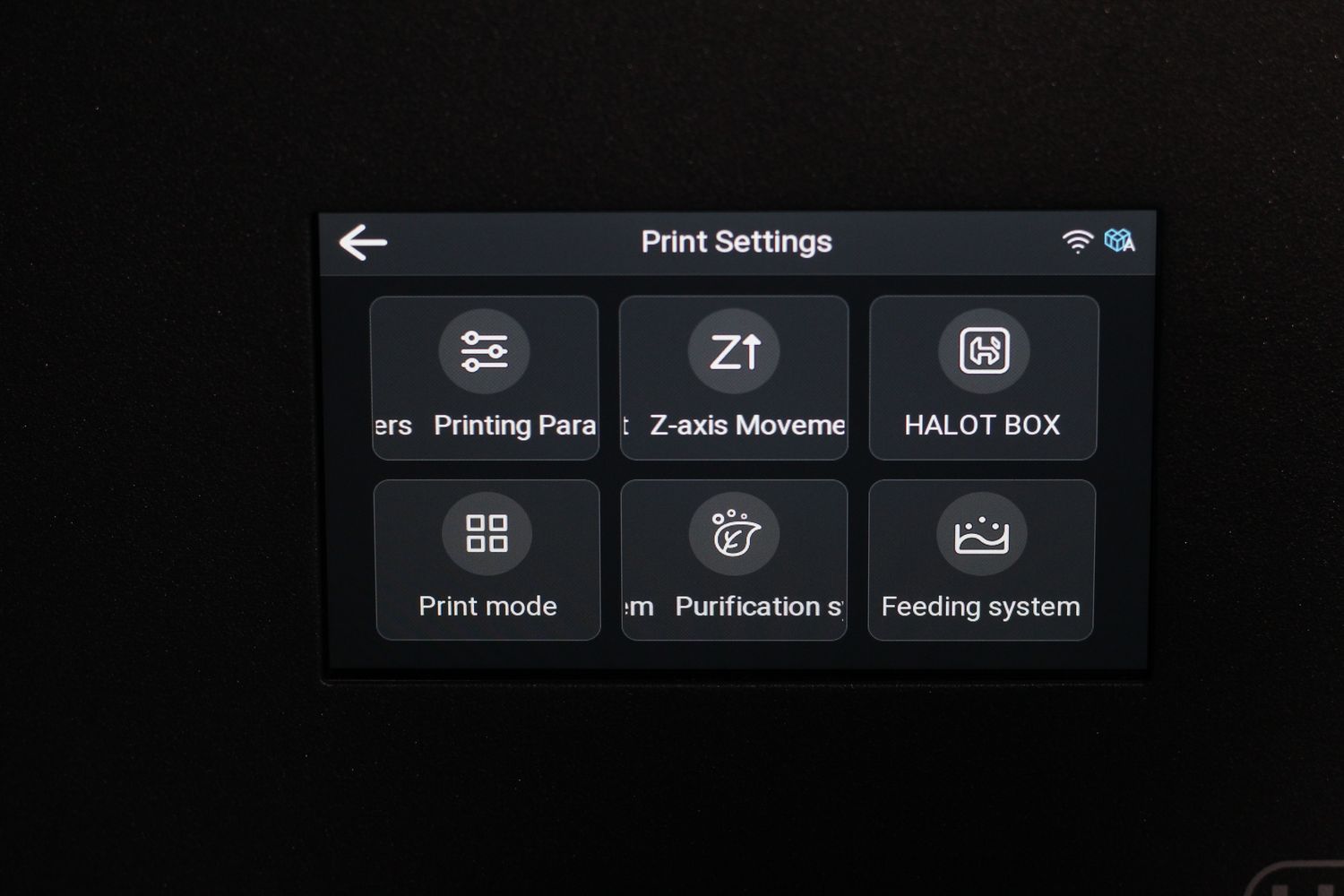
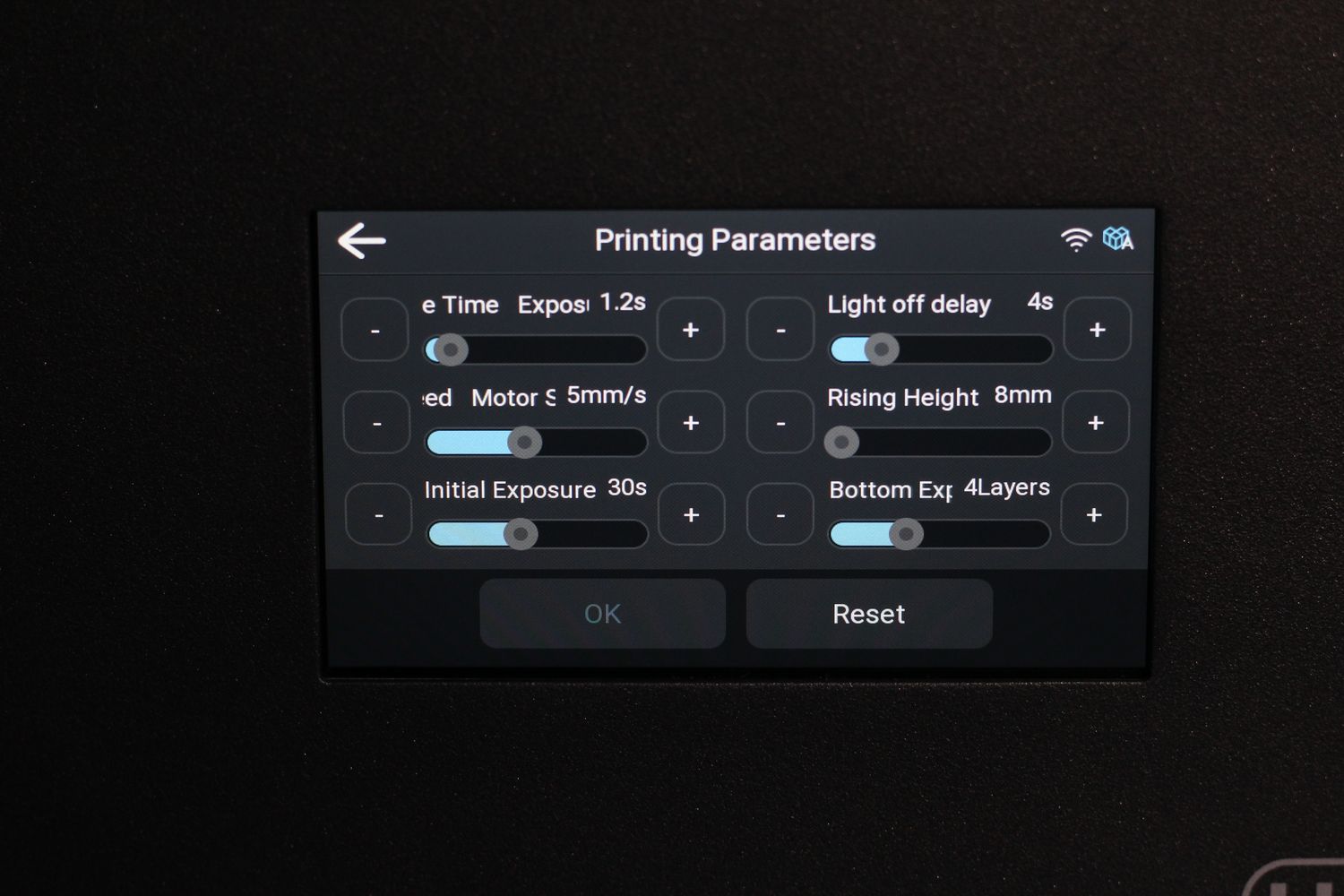

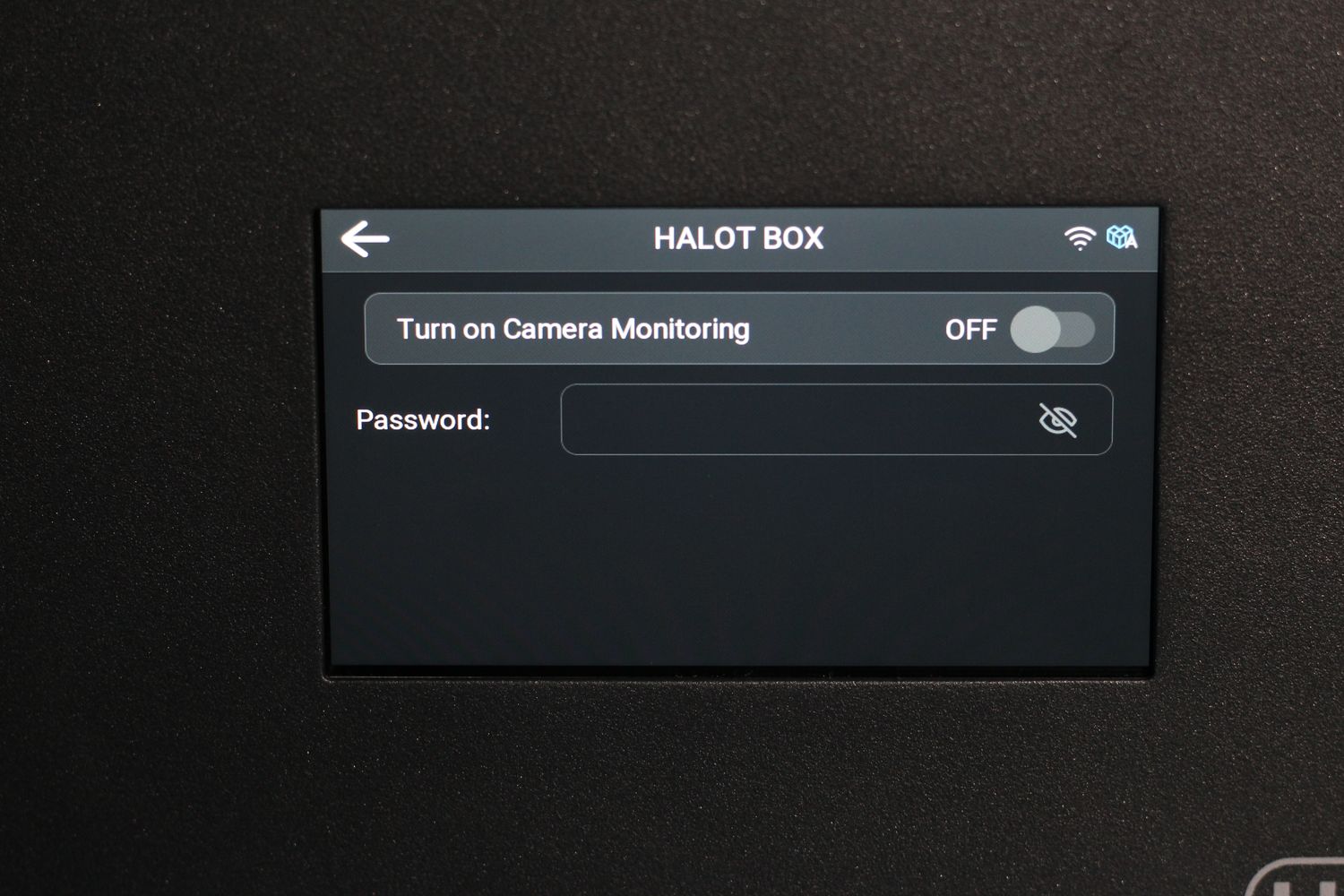
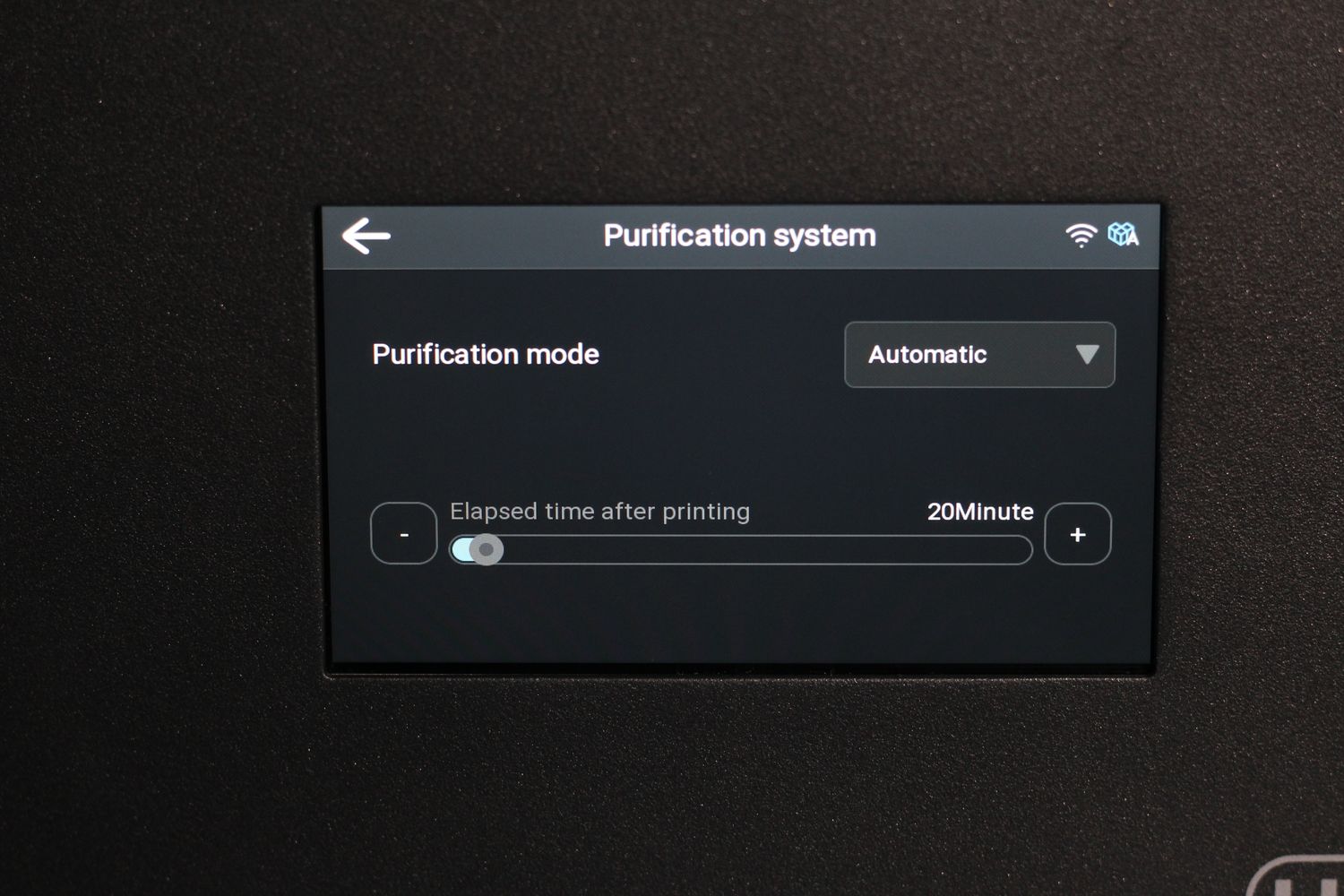

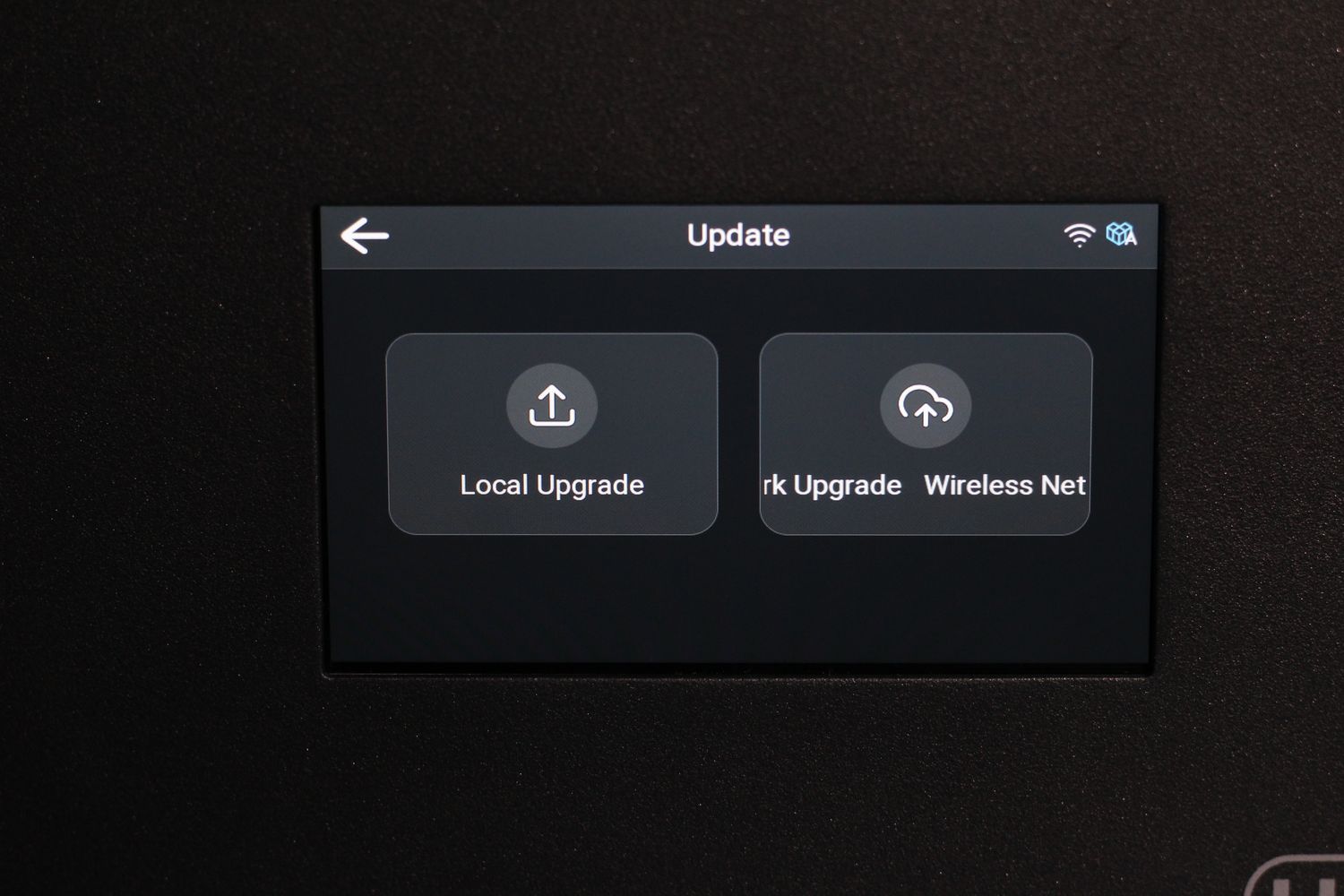
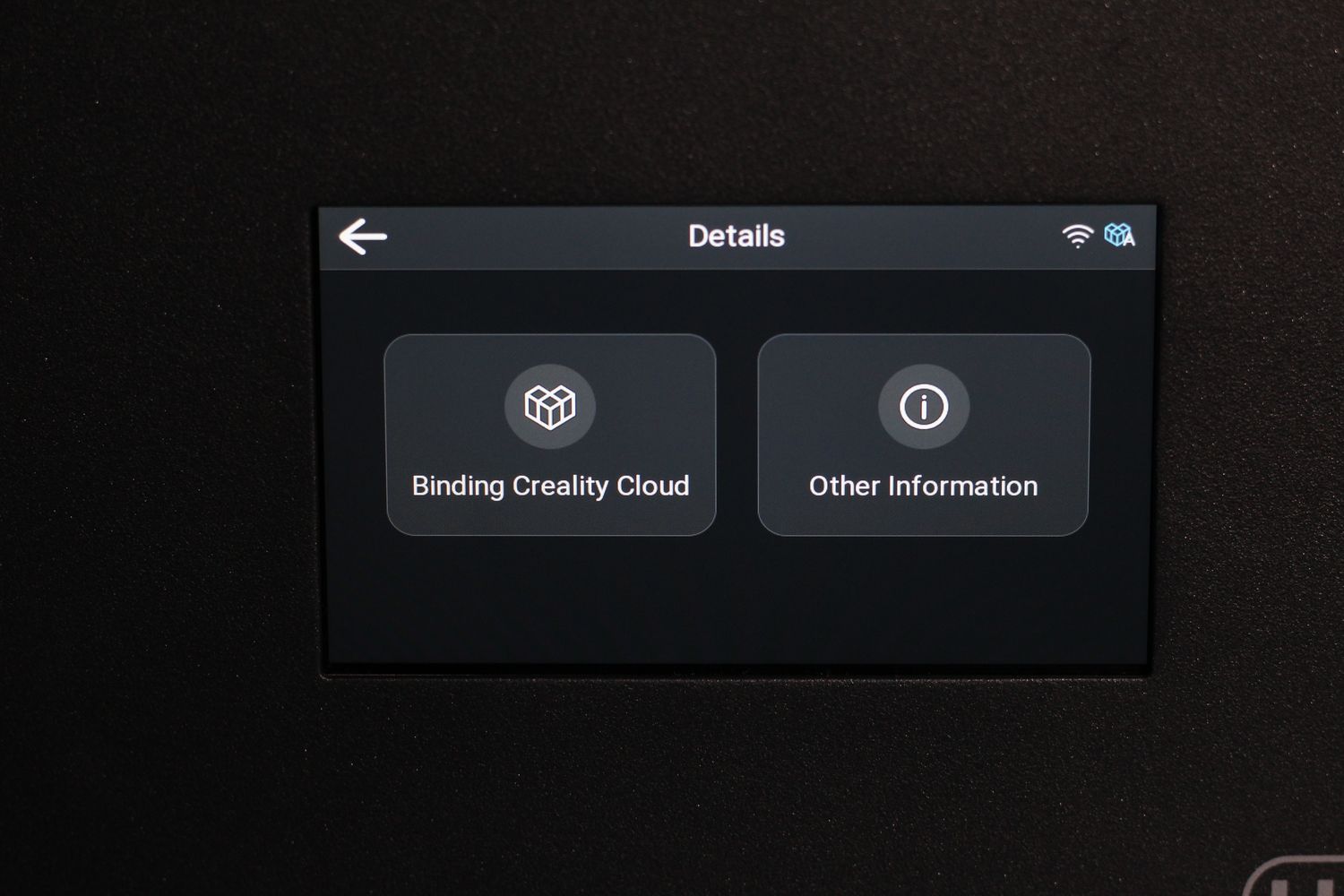
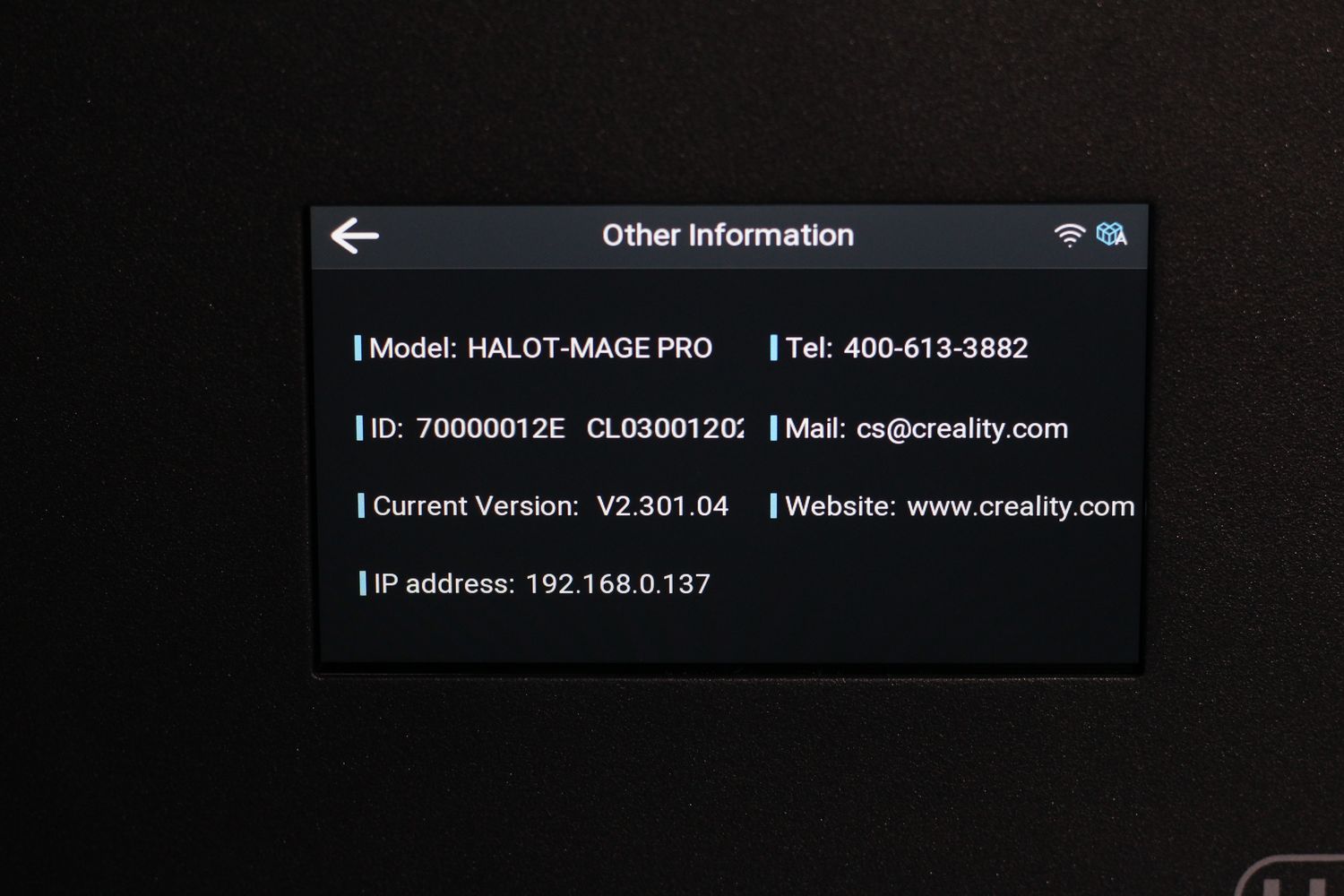

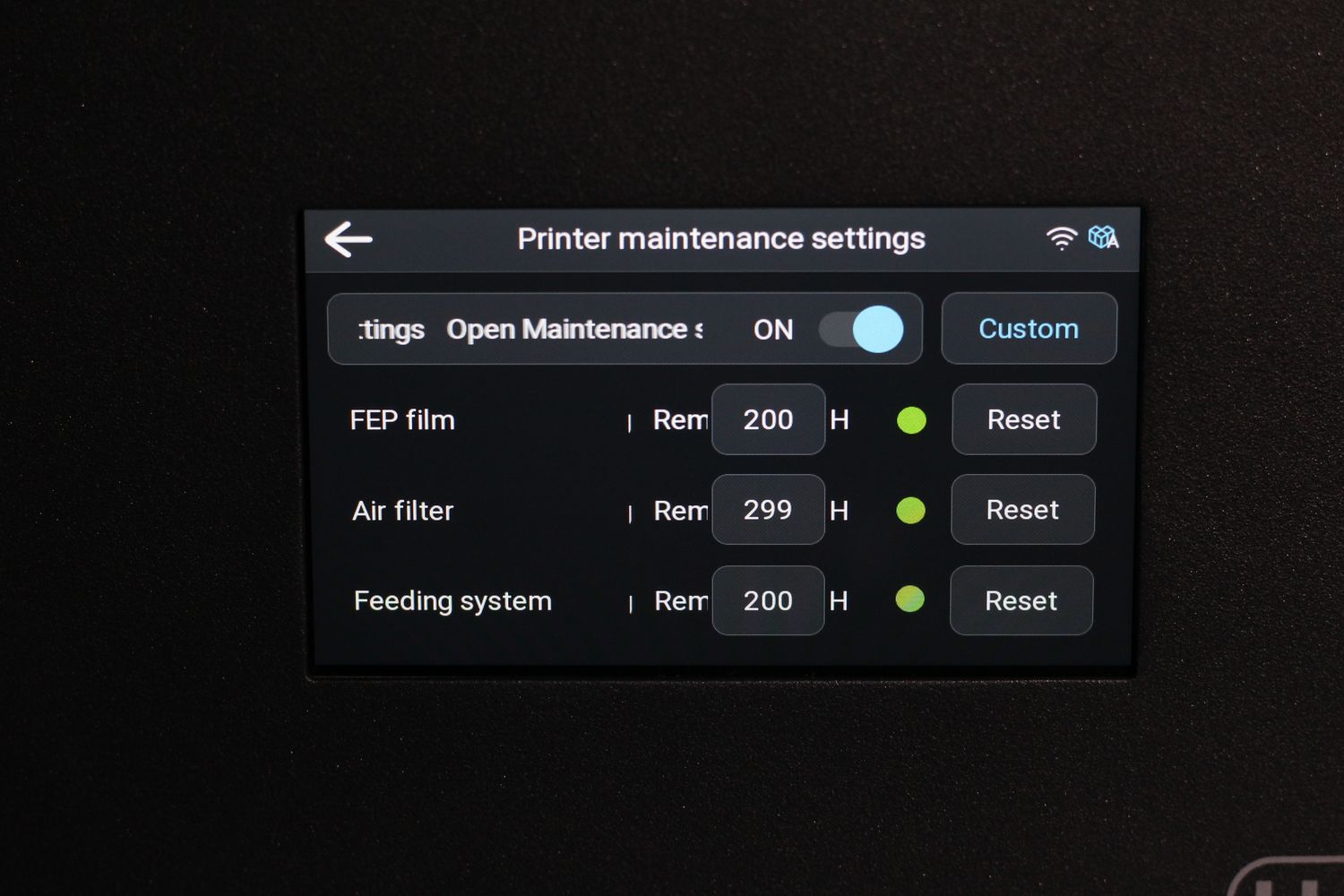
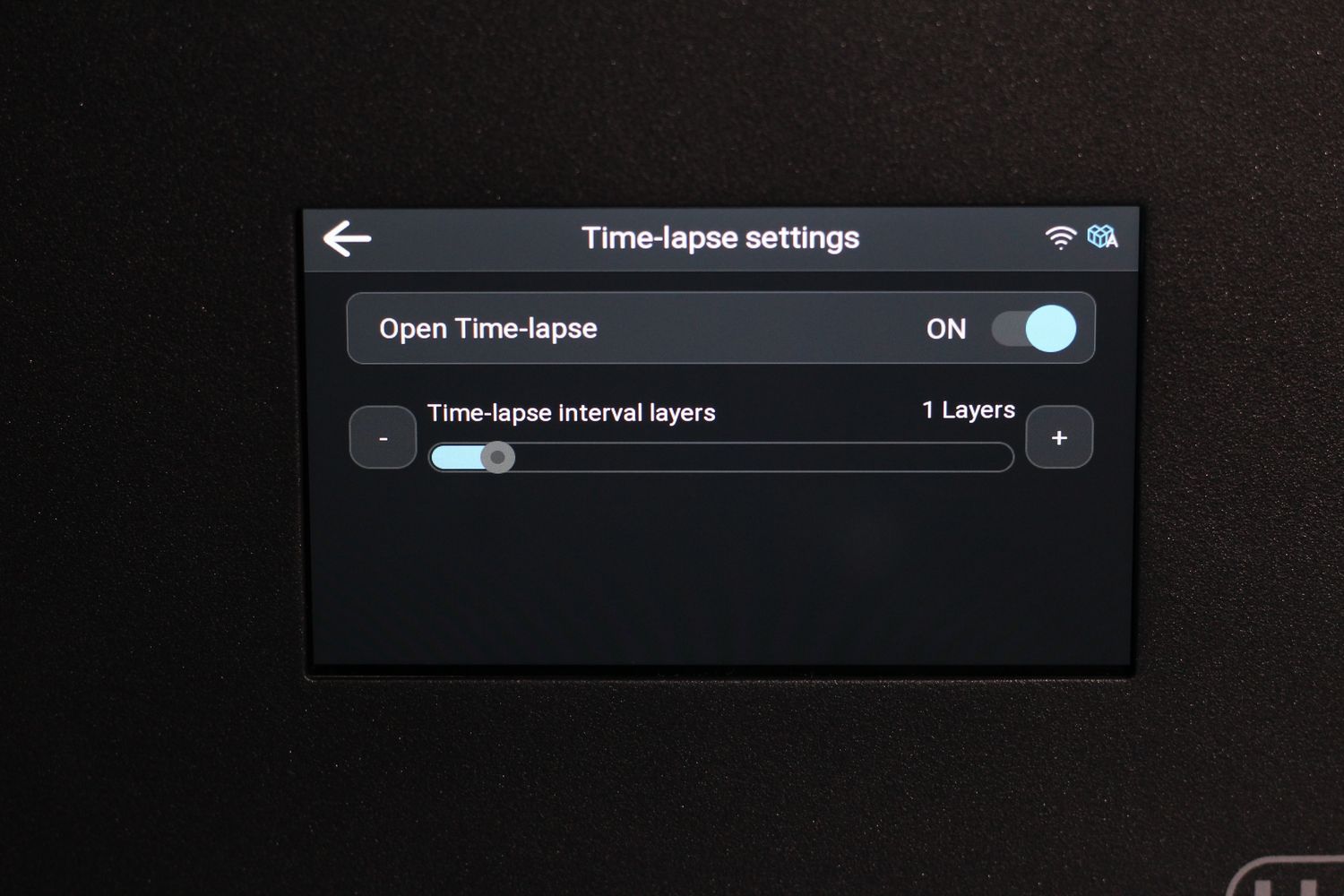
What I really miss is the on-screen controls of the build plate movement. For some reason, the firmware only allows you to move the plate up and down for leveling and you can’t control the build plate manually like you can on other printers.
At least the motion is scary fast when you perform the leveling procedure, like you can see in this short video.
Checkerboard Build Plate
The Creality Halot Mage Pro has a checkerboard engraved build plate which helps with adhesion, but in most situations, the model gets too much adhesion and it’s a hassle to remove the raft used for the print.
As you can see in the image below, part of a print got stuck on the plate and it took me about 20 minutes to remove. The small squares have a very high adhesion and it’s not that easy to clean the build plate.
I would rather want to see resin 3D printer manufacturers focus on removable flex plates out of the box for these machines, as it would be much easier to remove models that way.
Halot Box, Creality Cloud and other software
While testing the printer, I also wanted to slice some models with other slicers, but I was unable to find profiles made for Lychee or even the Chitubox Pro license I got in the package. Because of this issue, I went with the Halot Box slicer from Creality.
I can’t speak for the Windows version, but the Mac OS version is unfinished. The interaction with the model can be hard and cumbersome in some situations, and the software is poorly optimized. A slice would take between 5-10 minutes when slicing at the default slicer setting, on an M1 MacBook Pro.
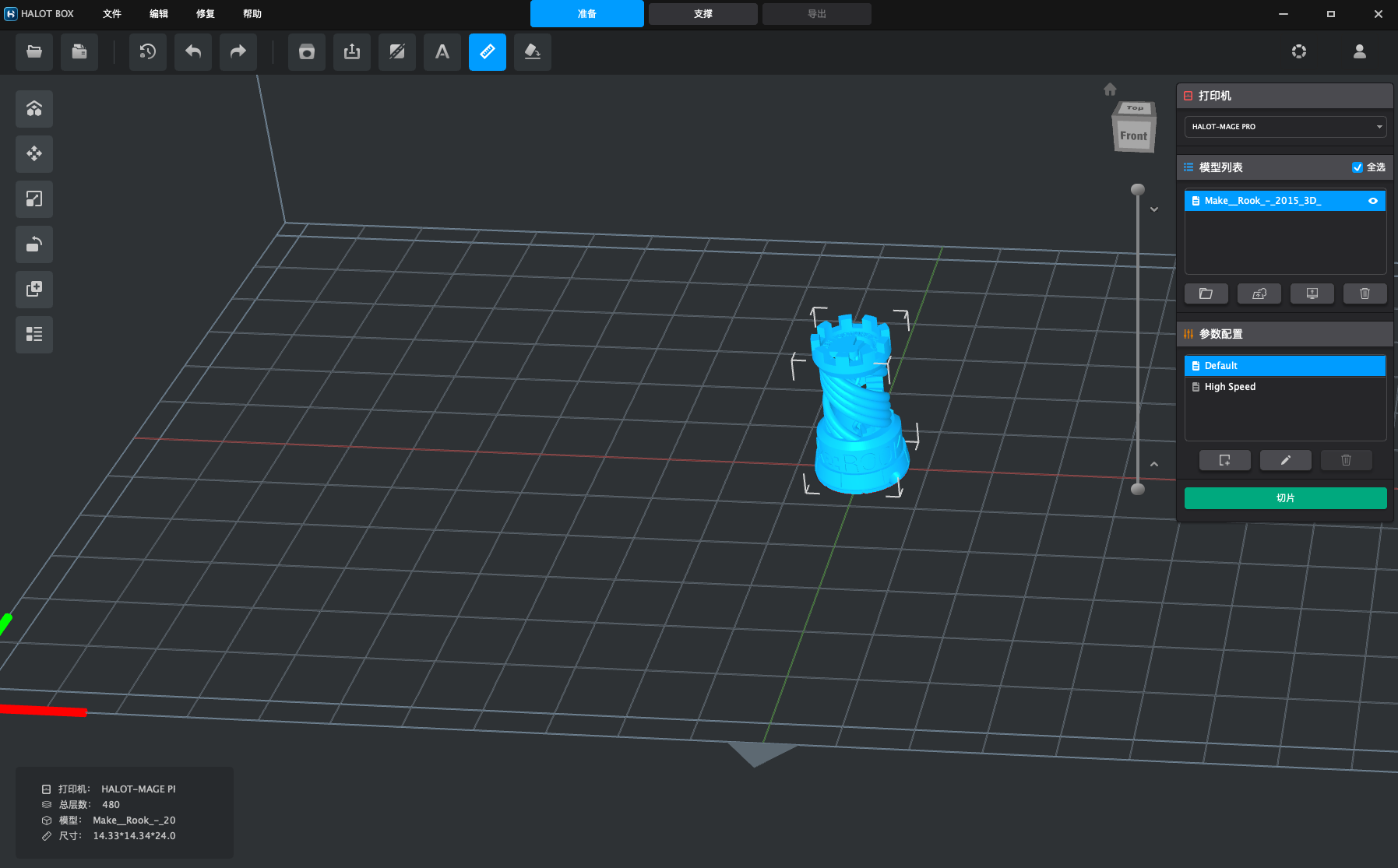

It can do its job to slice the model and produce the sliced model, but don’t consider it for any actual preparation of the model, as it’s just not as good as Lychee or Chitubox. Hopefully it will be improved over time.
The good news is the slicer already has more language options. During the review, Halot Box has been opened with Chinese language, but after checking with Creality, they showed me that the language options are available here

The Creality Cloud integration was also not very useful at the time of writing this review. As you can see, the settings available in the app are the same you would find on the machine and I can’t really say they are useful considering that most of the time you just slice on the computer and then send the sliced model to the printer.
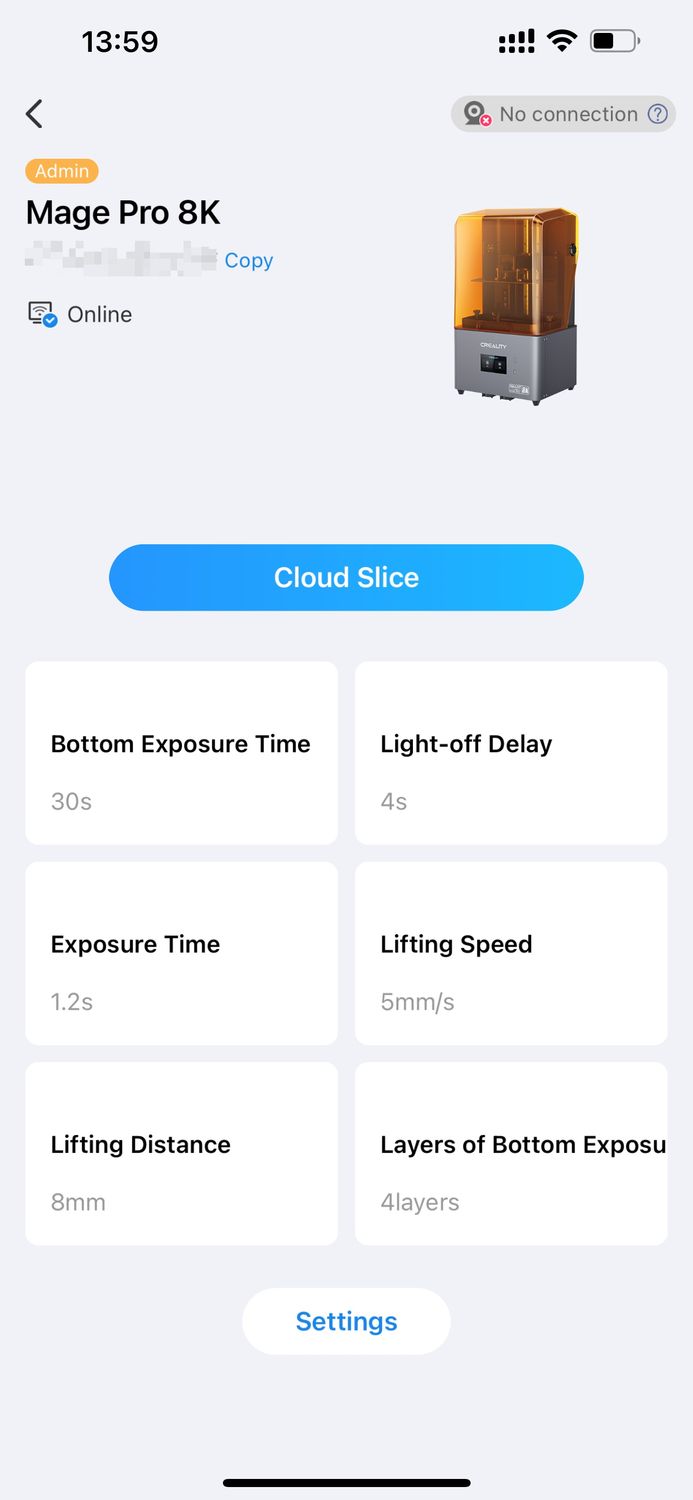
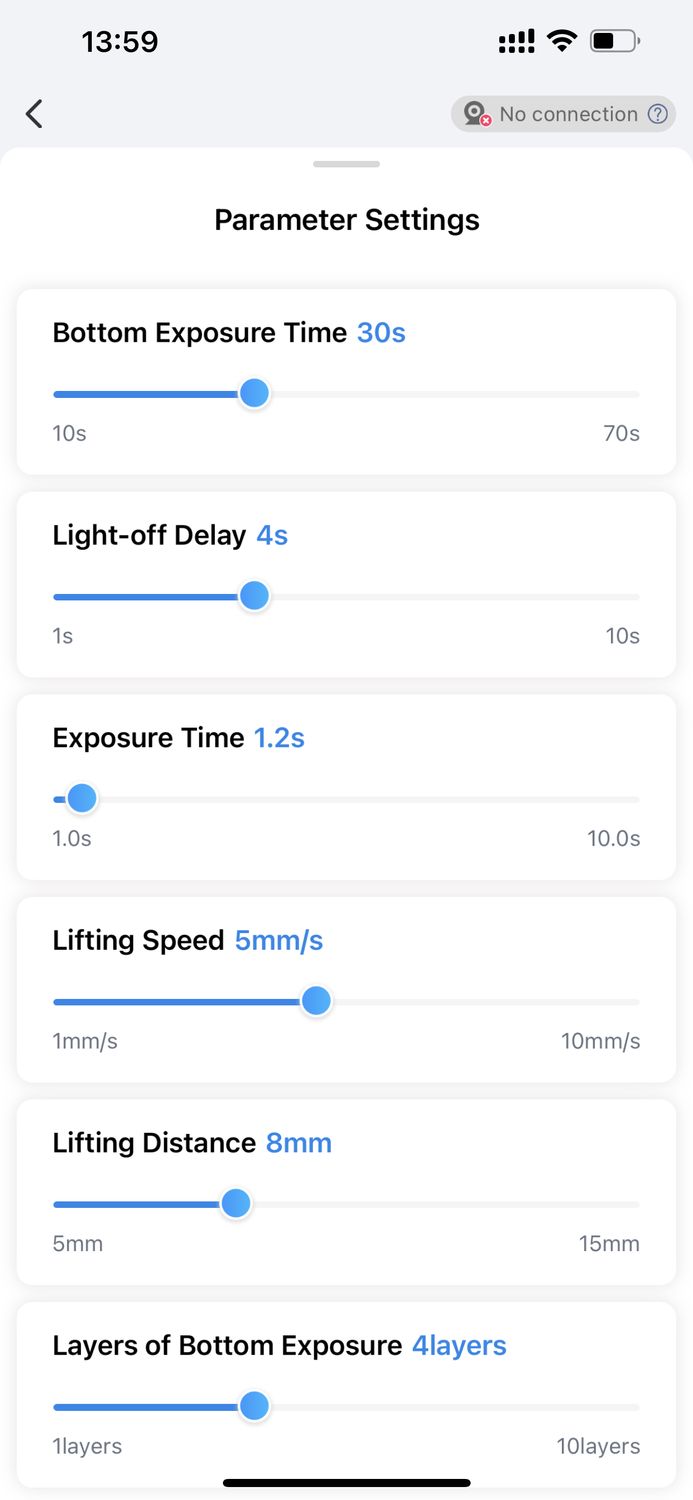

In the app, you can also see that the Time Lapse option is showing that a camera should be connected for this functionality. But the Logitech C920 webcam I tried was not detected and did not work.
If new firmware updates are available in the near future, I will update the printer and also update the review to share more about this.
In short, the software side is a bit of a mess right now, and I hope it will be improved soon
Creality Halot Mage Pro Noise Levels
I was expecting the Halot Mage Pro to be quite a bit noisier, to be honest, but the sounds of the fans during printing is close to acceptable in my opinion. Still not a silent machine like other smaller units, but not much noisier compared to other machines
Test prints on Creality Halot Mage Pro
Cardioth
This model is the pre-sliced file that comes with the Halot Mage Pro and the results are decent. The supports were annoying to remove and you can see small fragments of the support material, but the overall results are as expected.

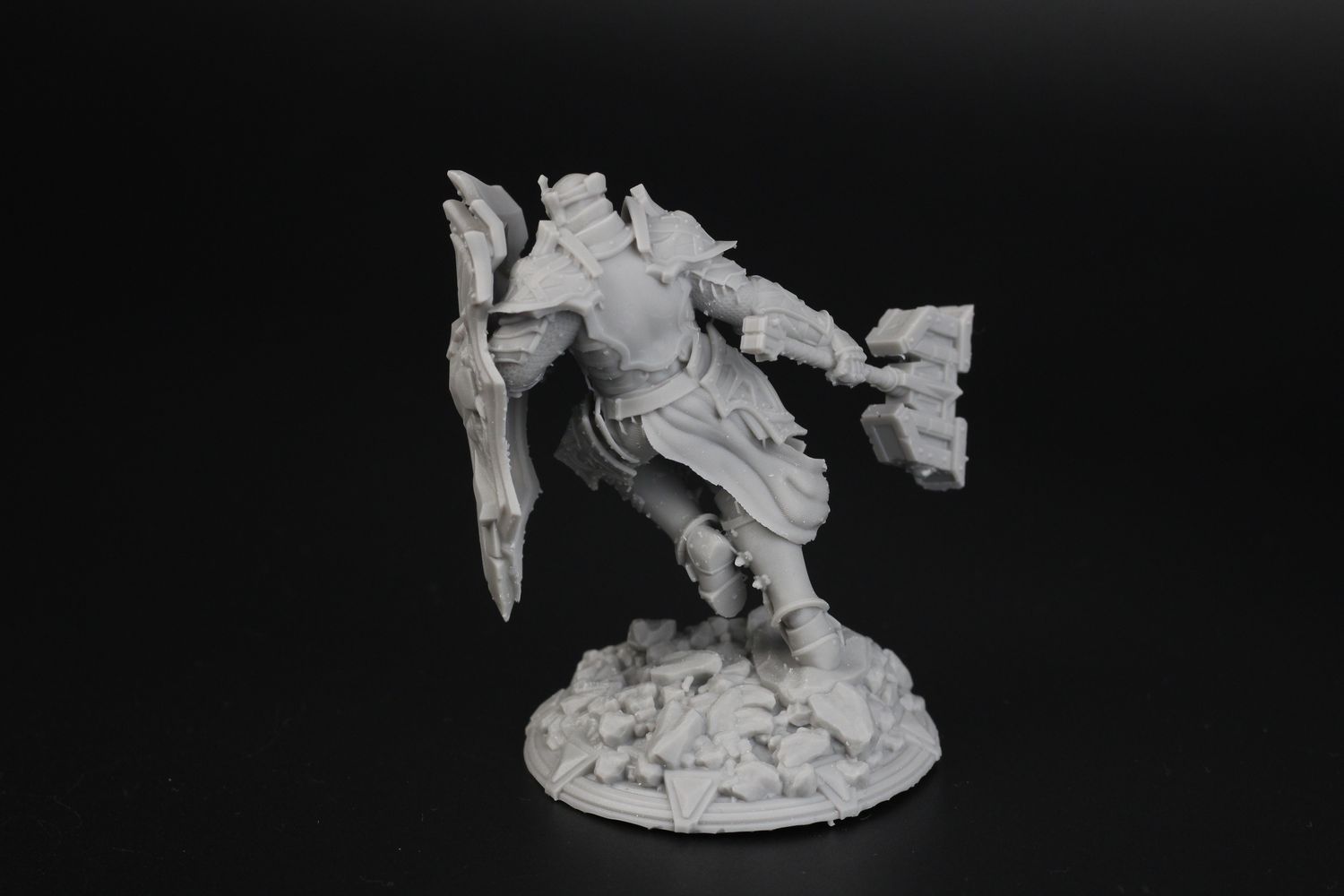
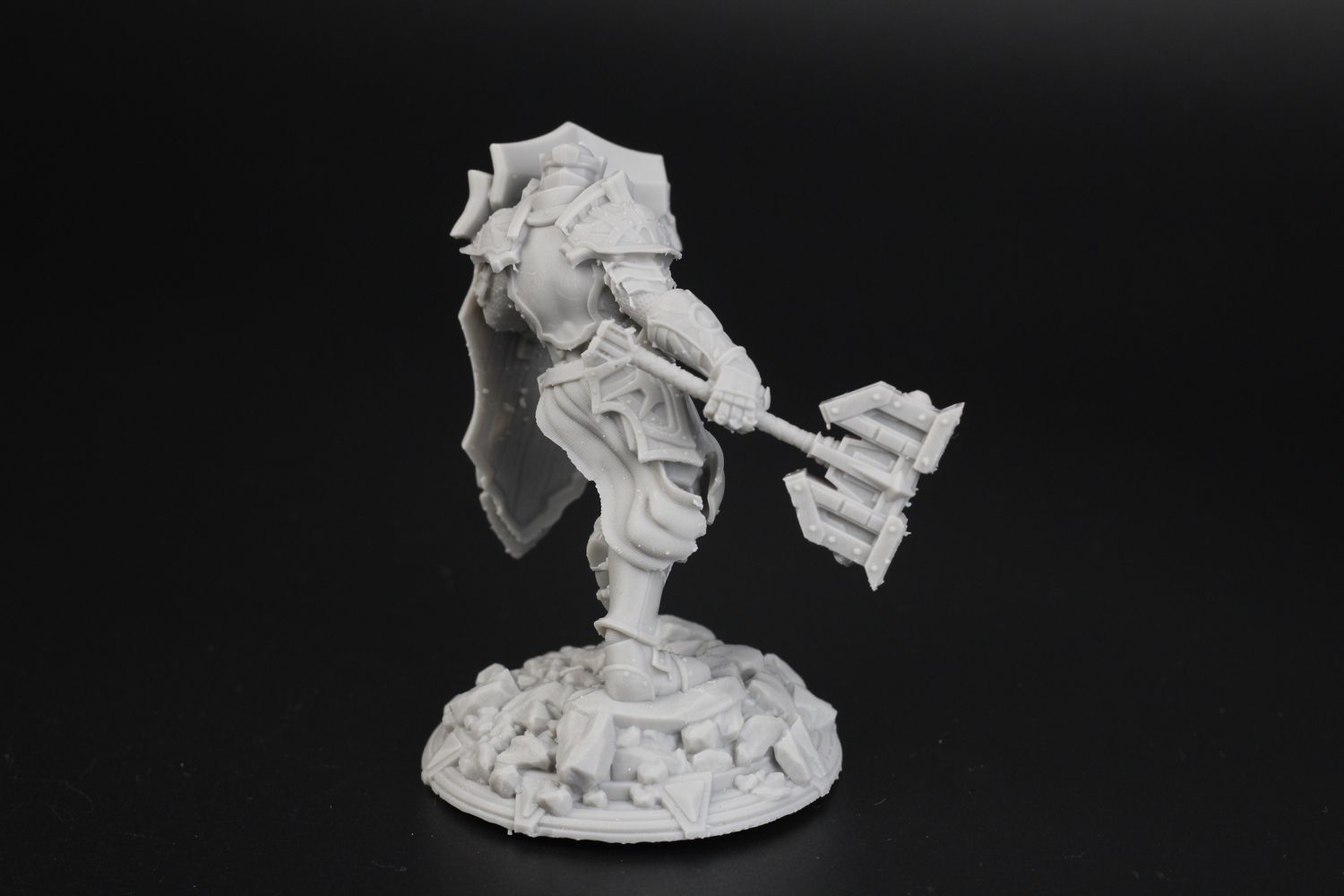

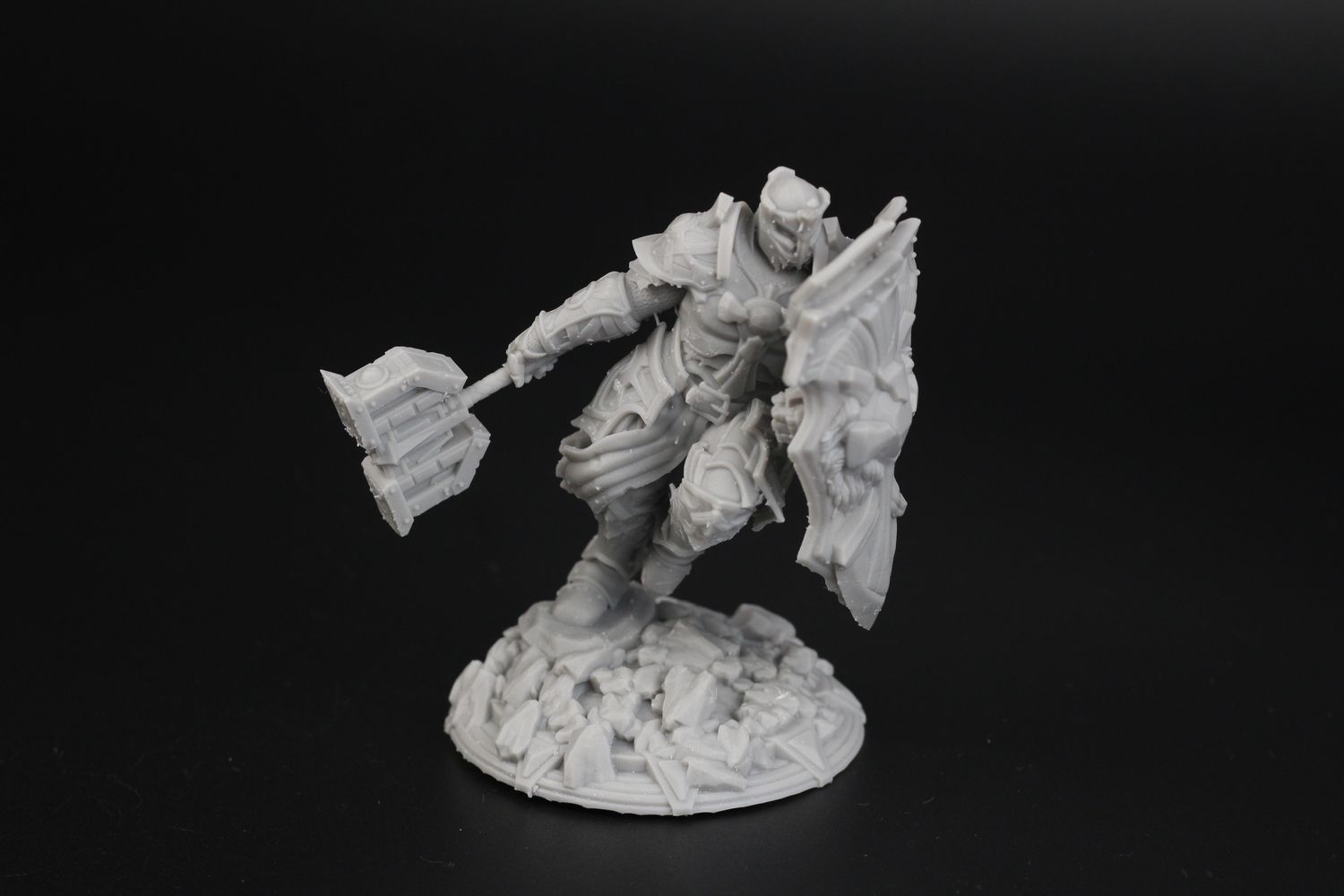
Tom Holland Robin
The Tom Holland Robin was the first model I sliced with Halot Box, and while the software is far from being ready, the slicing worked as expected. The model is made by Eastman and available on his Patreon page, so I used the pre-supported version he includes to just slice and print.
I am quite happy with the results, and I struggle to see any issue with the print quality or the way the model was printed other than the small blemishes from supports.

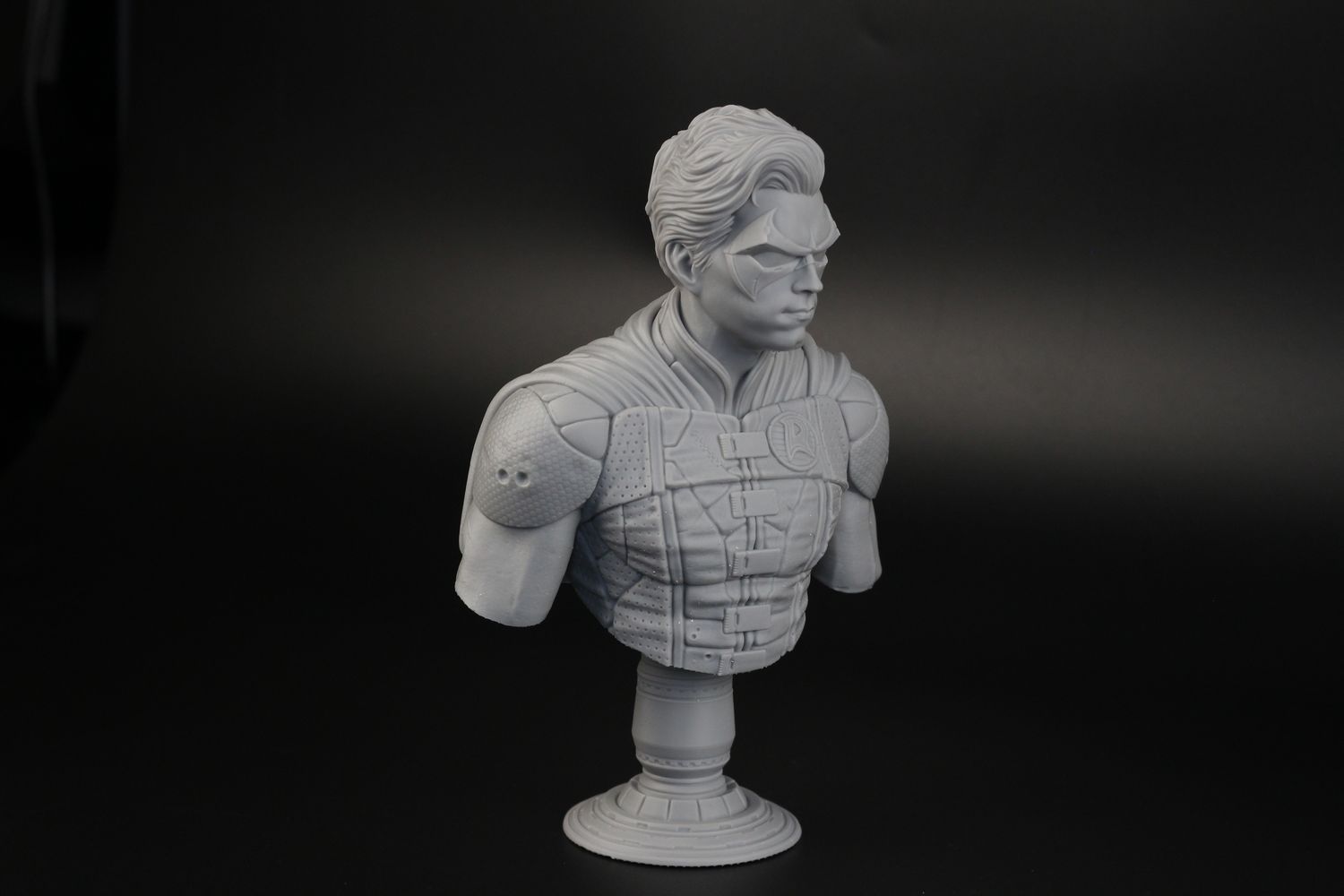





The Batman Who Laughs
Another cool Eastman model that I wanted to print for a long time is The Batman Who Laughs. I wanted to print it on an FDM printer but it was a bit too complex so I saved it for resin.
The results are excellent. The hands and the spikes were printed sepparately, so I needed to glue them in using some resin and the cure light is made some time ago.

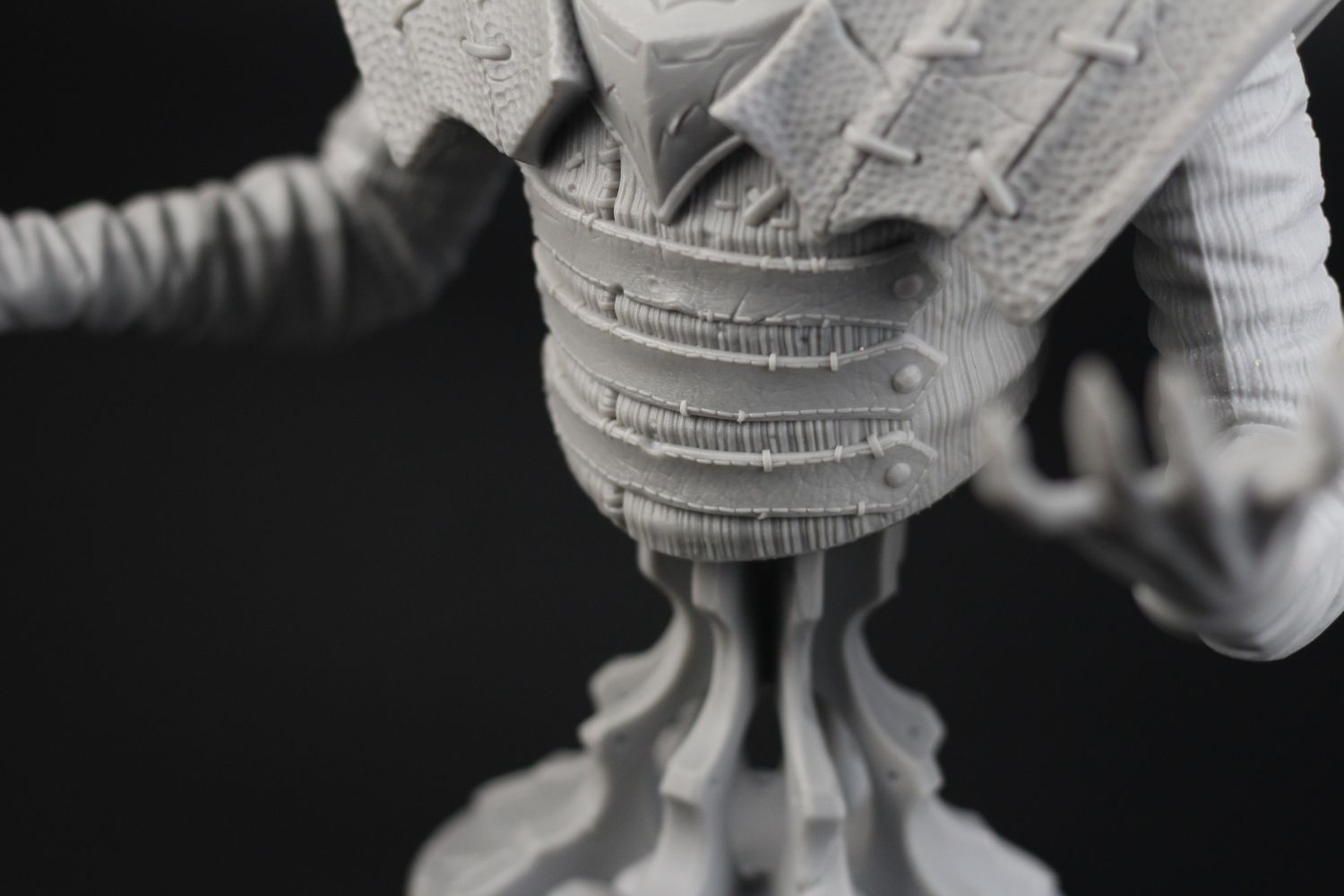





Conclusions: Is the Halot Mage Pro worth it?
It’s not easy to answer this question after the experience I had with the Halot Mage Pro.
On one hand, I would not recommend this machine considering that my unit came with a pierced FEP film and a used carbon filter that didn’t do its job. I really hope this is an isolated incident and retail units actually come like a brand-new machine should be delivered.
Besides that, at the time of writing this article, the Halot Box slicer is unfinished and there are no profiles available in Lychee or Chitubox for this particular machine. Timelapse is also not a thing and the overall software sides needs quite a bit of work to make it useful.
On the other hand, the printer can deliver very nice prints, and even though the resin pump is not smart or silent, it’s a nice feature of the printer and it makes it easy to refill the vat or replace resin. Besides this, you also get 1 year of Chitubox Pro included in the package, which might be a benefit for users that use this slicer software.
We also need to consider that there are other resin printers out there that constantly go on sale, and Anycubic just launched their M5s resin printer which is available for pre-order at the same price as the Creality Halot Mage Pro – 499$.
For this kind of money, I would get the Mage Pro just because of the added resin pump and the handy plastic cover, as I don’t expect having a 12K screen to be actually meaningful on a 10-inch screen. At the time of writing this review, I did not test the Anycubic M5s, so my guess might be invalid so take this with a grain of salt.
But of course, the decision is yours so I would recommend checking out other reviews out there before you make your purchase decision.
Creality Halot-Mage Pro Rating
Design
Specs
Noise Levels
Ease of use
Print Quality
The Creality Halot-Mage Pro can produce excellent looking models, but the software side is unfinished and needs more work. If that gets better over time, then I wouldn't have a problem recommending the Halot Mage Pro when you can find it at a discount.
Halot-Mage Pro vs Halot-Mage
Creality launched the Halot Mage Pro at the same time as its less-equipped brother, the Halot Mage. Below, you can see the main differences between the printer.
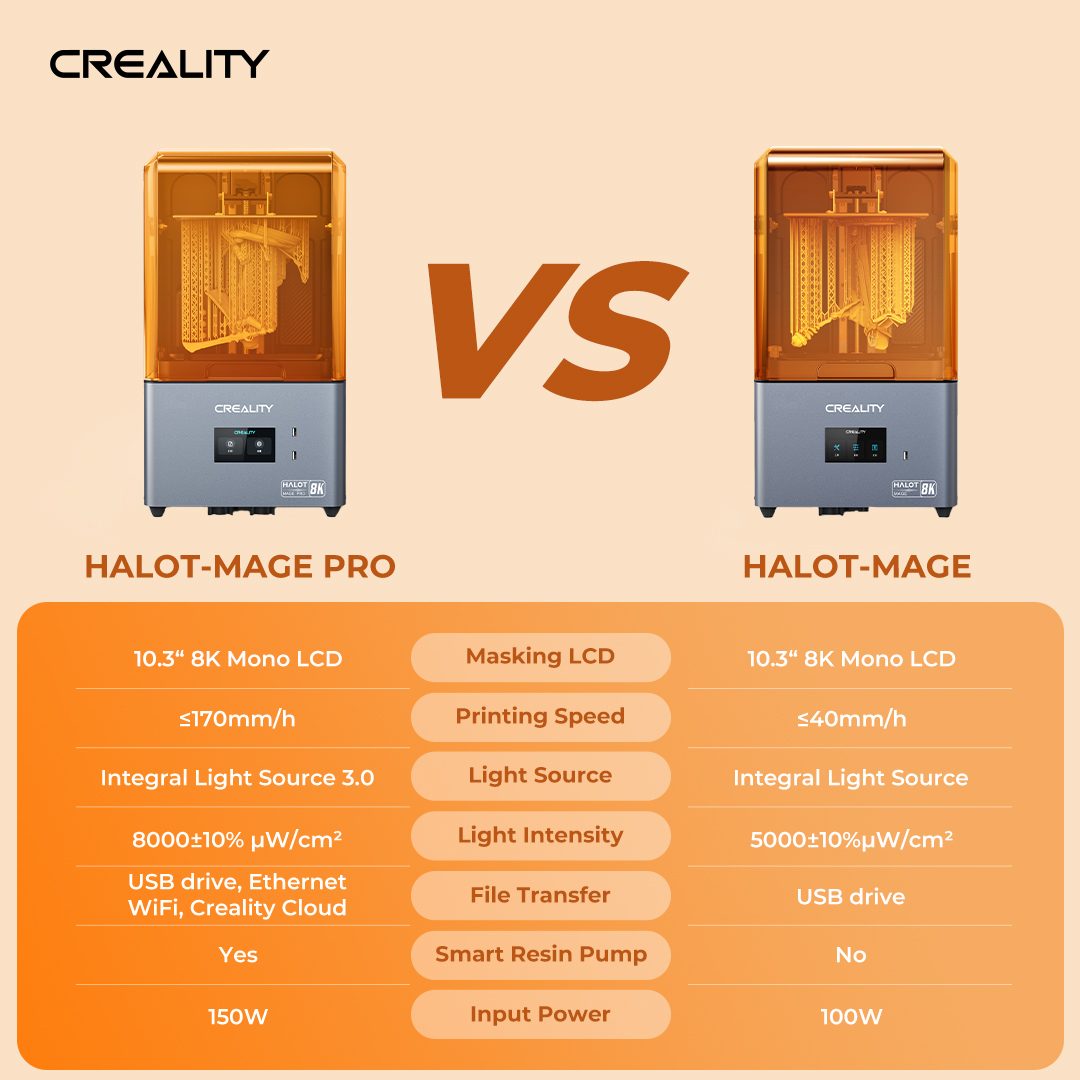
Externally, the printers look very similar. And the price is usually about 100$ less for the regular Halot Mage compared to the Pro version, but you lose the resin pump (which is actually useful in my opinion), the internet connectivity (which is not that useful at the moment) and 1 year of Chitubox Pro license (which could be useful for some people)
Of course, the light source is not as powerful, but as mentioned in the article, 170mm/h print speed is not really a thing in real life so that would not be a huge setback for the cheaper printer.
In my opinion, it’s worth getting the Pro version for such a small price difference.
Where to buy the Creality Halot Mage Pro?
The Creality Halot Mage Pro can be purchased from the following sites:
I recommend checking out the Discount Codes page before purchasing. I regularly update the article with discount codes for various online shops, and you might find one for this particular model.
The Creality Halot Mage Pro was provided free of charge by Creality for the purpose of this review. While the article includes affiliate links, all opinions are my own. Nobody reviewed the article before it was posted, following the Review Guidelines.
Liked it?
|
|

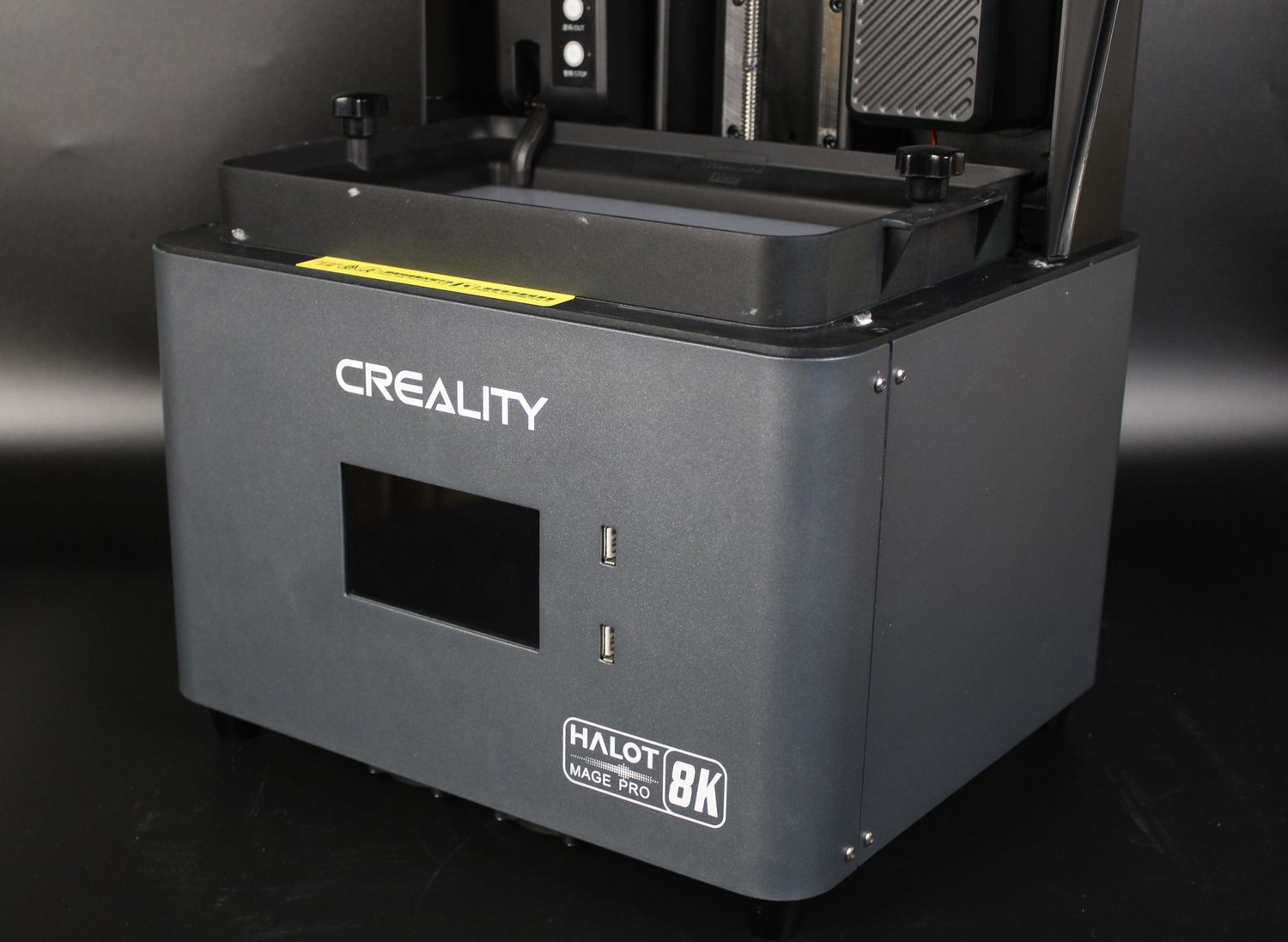

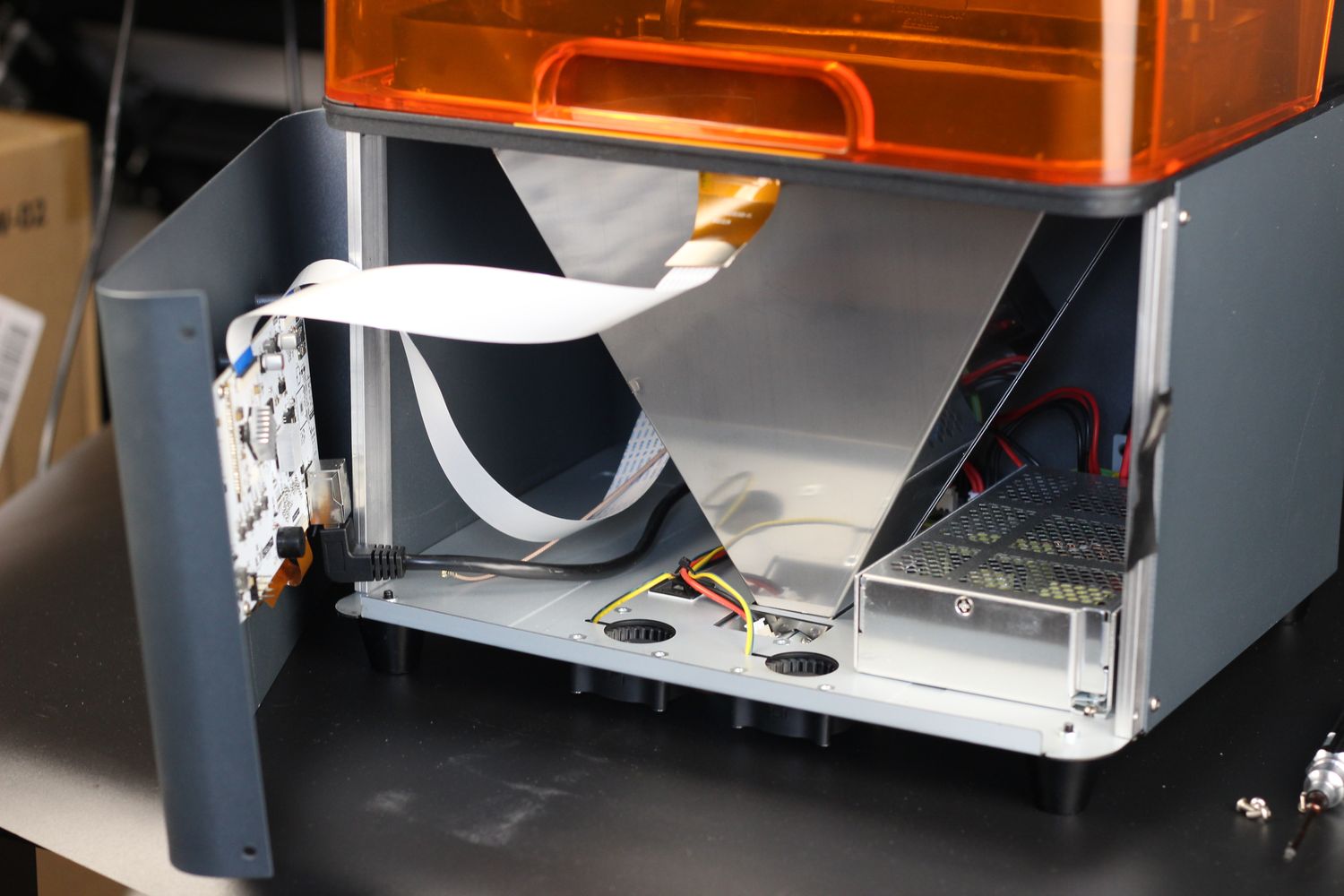




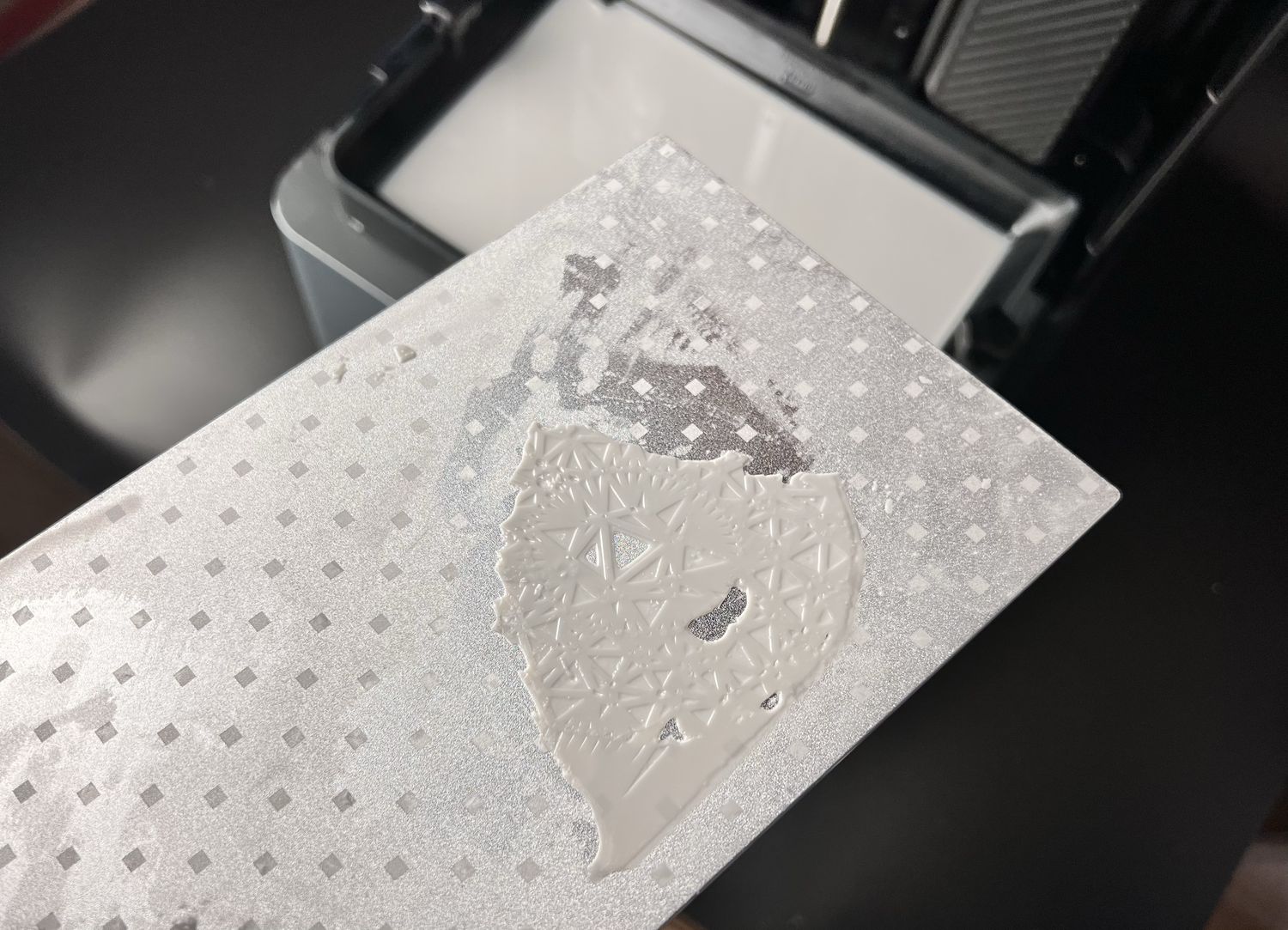
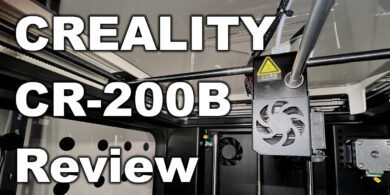


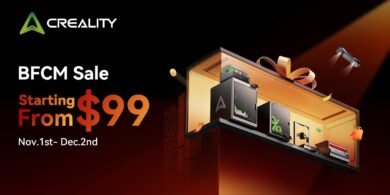

You can leave a comment for this article on the 3DPrintBeginner Forum